Double Muniya Border Paithani: An Ultra-Chic Tradition
Introduction to Double Muniya Border Paithani
The Double Muniya Border Paithani is a masterpiece of traditional Indian weaving, blending centuries-old craftsmanship with contemporary elegance. This exquisite saree, hailing from the ancient town of Paithan in Maharashtra, is renowned for its luxurious silk fabric, intricate designs, and vibrant colors.
The hallmark of this saree is its double muniya border, adorned with delicate parrot motifs that symbolize love and beauty. Wearing a Double Muniya Border Paithani is not just about fashion; it’s about embracing a piece of history and showcasing a rich cultural heritage. This saree is perfect for weddings, festive occasions, and cultural celebrations, making it a timeless addition to any wardrobe.
History and Cultural Significance
Origin of Paithani Sarees
The history of Paithani sarees dates back to the Satavahana dynasty (circa 200 BCE to 200 CE), when the town of Paithan was a prominent center of trade and culture. These sarees were initially woven with pure silk and adorned with real gold and silver threads, making them a luxury reserved for royalty and the elite.
Brocade Paithani Silk Dupatta for Bride(Opens in a new browser tab)
Over the centuries, Paithani sarees have evolved, influenced by various dynasties such as the Mughals, Marathas, and Peshwas. Each era contributed unique elements to the design and weaving techniques, culminating in the exquisite art form we admire today.
Symbolism in Double Muniya Border
The double muniya border is a distinctive feature of Paithani sarees, especially revered for its symbolic richness. The parrot motifs, or “muniya,” represent love, prosperity, and beauty in Indian culture. The double muniya border, featuring these motifs in a mirrored design, doubles the symbolism of auspiciousness and good fortune.
Soft Silk Banarasi Nauvari Saree(Opens in a new browser tab)
This intricate design element not only enhances the saree’s aesthetic appeal but also imbues it with a deep cultural significance, making it a popular choice for auspicious occasions like weddings and festivals.
Artistry and Technique
Intricate Weaving Process
Creating a Double Muniya Border Paithani saree is an art that requires exceptional skill and patience. The process begins with selecting high-quality silk threads, dyed using natural colors to ensure vibrancy and longevity. The weft and warp threads are meticulously prepared on a traditional handloom. The hallmark of Paithani weaving is the tapestry technique, where the weaver interlocks the weft threads to create intricate motifs.
Luxurious Louts Paithani Silk Sarees(Opens in a new browser tab)
- Selection of Materials:
- High-quality silk threads
- Natural dyes for vibrant colors
- Gold and silver zari threads for accents
- Weaving Process:
- Preparation of weft and warp threads
- Use of traditional handloom
- Tapestry technique for intricate motifs
- Double Muniya Border:
- Precise mirroring of parrot motifs
- Alignment of designs
- Use of zari threads for opulence
Challenges and Expertise
The creation of a Double Muniya Border Paithani saree is fraught with challenges. The intricate designs demand a high level of precision and skill, and even a minor mistake can disrupt the entire pattern.
Special 9-Yard Ready-to-Wear Paithani(Opens in a new browser tab)
The use of fine silk and precious zari threads requires consistent tension and alignment throughout the weaving process. Despite these challenges, the skilled artisans of Paithan continue to produce these masterpieces, preserving an age-old tradition.
Contemporary Relevance
In today’s fashion landscape, the Double Muniya Border Paithani saree remains a symbol of elegance and tradition. Its timeless appeal transcends generations, making it a favorite among women of all ages.
The vibrant colors and intricate designs make it suitable for various occasions, from weddings and festivals to formal events and parties. Modern fashion designers have embraced the Paithani saree, incorporating it into contemporary collections that blend traditional craftsmanship with modern aesthetics. This fusion of old and new has helped Paithani sarees maintain their relevance in the ever-evolving fashion industry.
The growing interest in sustainable and ethical fashion has also boosted the popularity of Paithani sarees. Consumers today value artisanal craftsmanship and sustainable practices, leading to a renewed appreciation for traditional weaves like the Paithani. The resurgence of interest in traditional textiles has ensured that Paithani sarees continue to be cherished and celebrated.
Double Muniya Border Paithani in Fashion
Adorning the Modern Wardrobe
The Double Muniya Border Paithani saree is a versatile piece that can seamlessly fit into a modern wardrobe. Fashion enthusiasts pair these sarees with contemporary blouses and accessories, creating a unique blend of traditional and modern styles. The saree’s rich texture and vibrant colors make it a perfect choice for both formal and casual occasions, allowing women to express their individuality and cultural pride.
Celebrity Endorsement
The allure of the Double Muniya Border Paithani saree has captivated many celebrities and public figures. Bollywood actresses, in particular, have been seen wearing these exquisite sarees at red carpet events, award functions, and weddings. Their endorsement has significantly contributed to the saree’s popularity, inspiring a new generation to embrace this traditional attire.
Celebrities like Vidya Balan, Rekha, and Deepika Padukone have often been spotted in Paithani sarees, showcasing the beauty and elegance of this traditional garment. Their influence has not only increased the saree’s appeal but also highlighted the craftsmanship and cultural significance behind it.
Preserving the Legacy
Preserving the legacy of the Double Muniya Border Paithani saree is crucial to maintaining India’s rich textile heritage. Various organizations and initiatives are working to support the artisans who create these masterpieces. By promoting traditional weaving techniques and providing fair wages to weavers, these efforts help sustain this art form.
Consumers also play a vital role in preserving this legacy by choosing to purchase authentic Paithani sarees. Supporting ethical fashion brands that prioritize craftsmanship and sustainability can help ensure that these traditions continue to thrive. Educational initiatives and exhibitions further contribute to raising awareness about the cultural importance of Paithani sarees, inspiring future generations to appreciate and cherish this timeless art form.
The Double Muniya Border Paithani saree is a symbol of India’s rich cultural heritage and exquisite craftsmanship. Its intricate designs, vibrant colors, and deep symbolic meaning make it a cherished addition to any wardrobe.
As this traditional attire continues to evolve and adapt to modern fashion trends, its timeless appeal remains undiminished. By supporting the artisans and promoting ethical fashion, we can help preserve this beautiful tradition for generations to come.

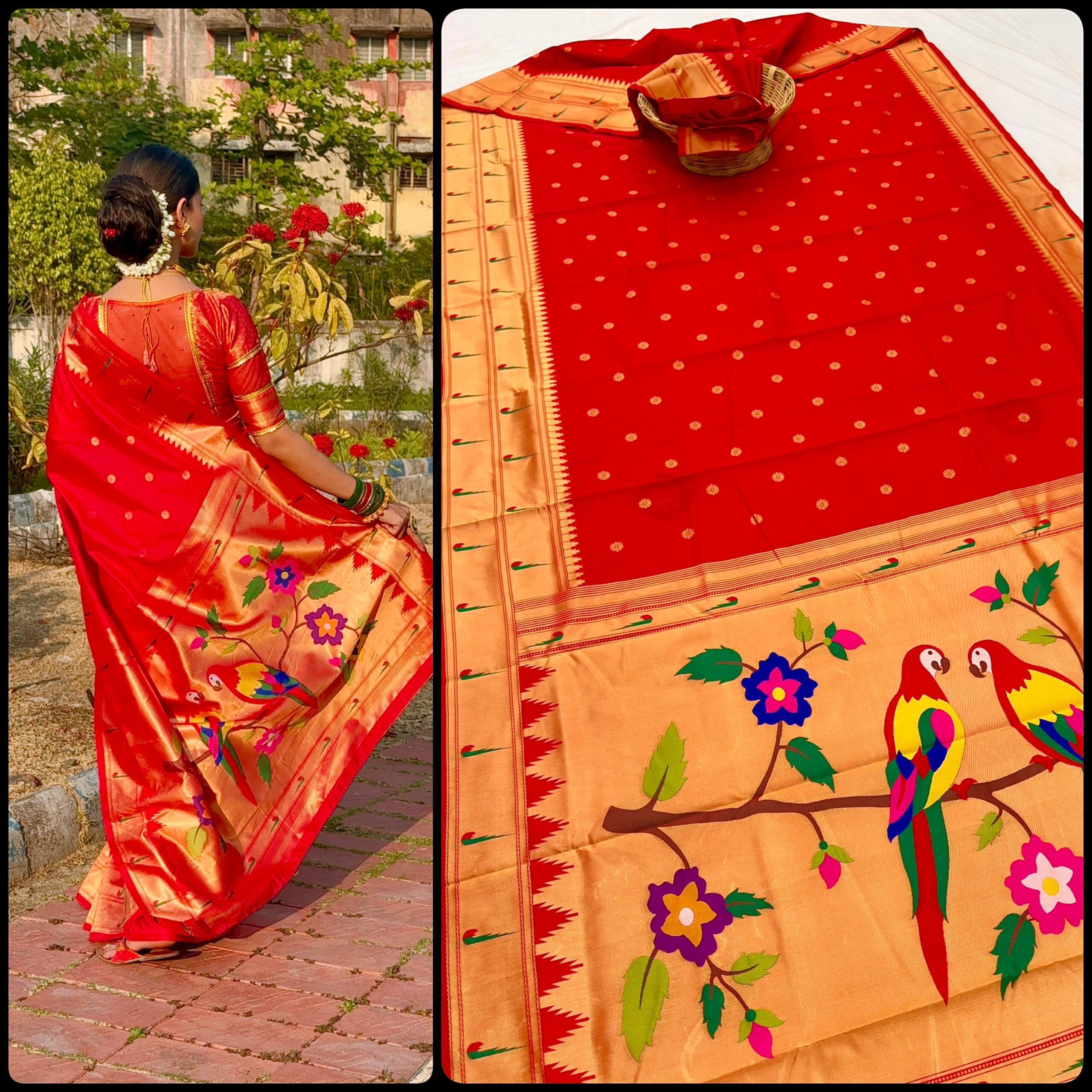
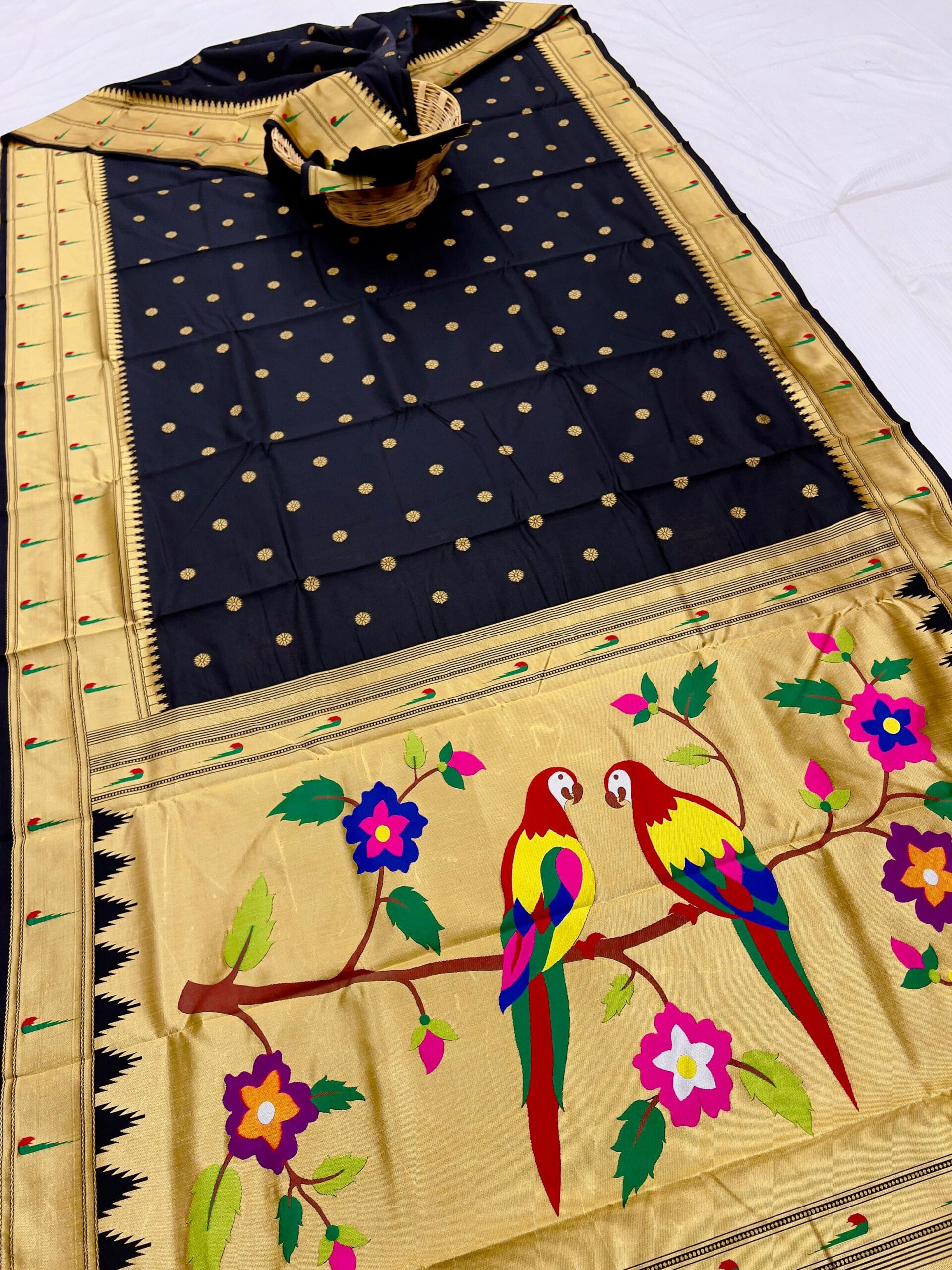
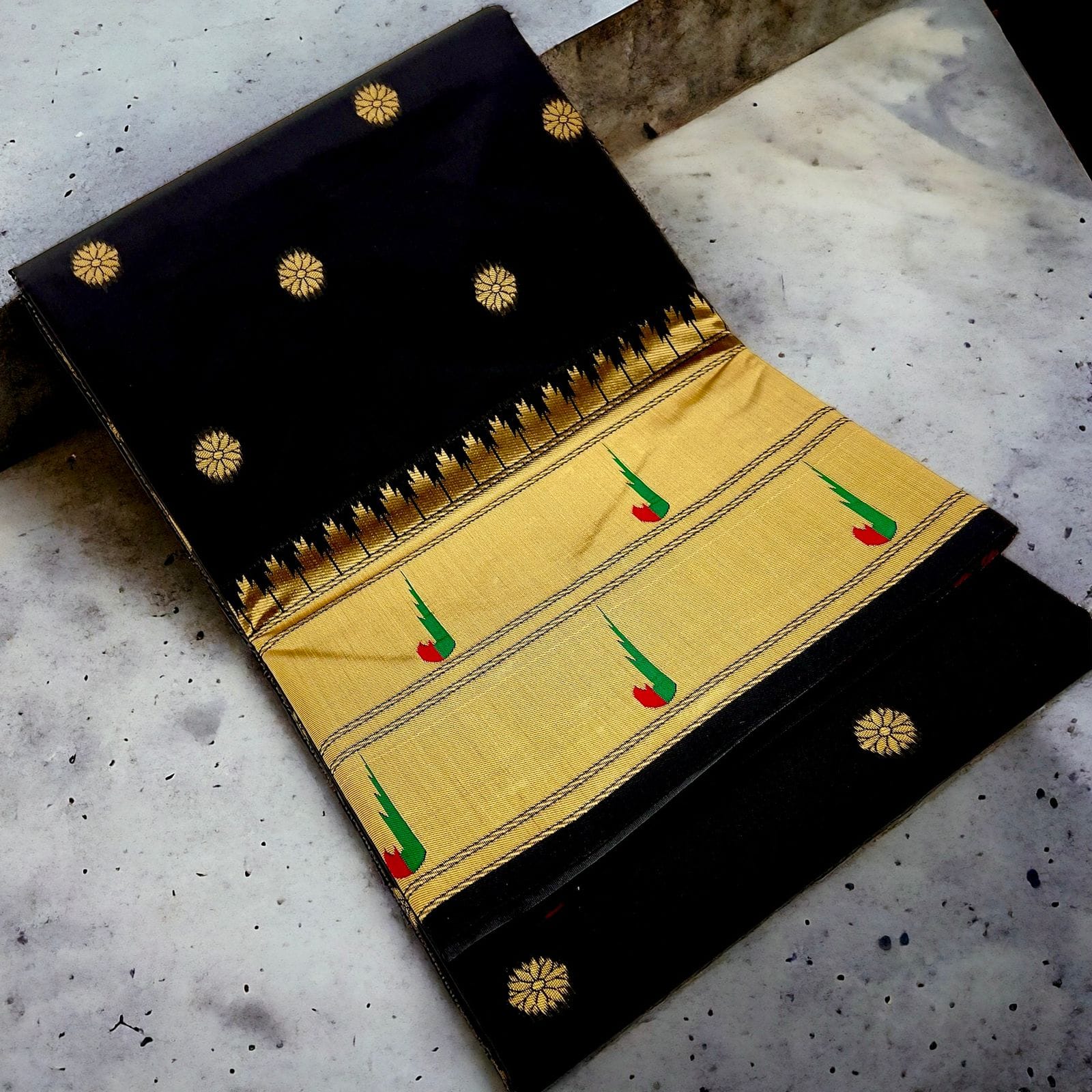
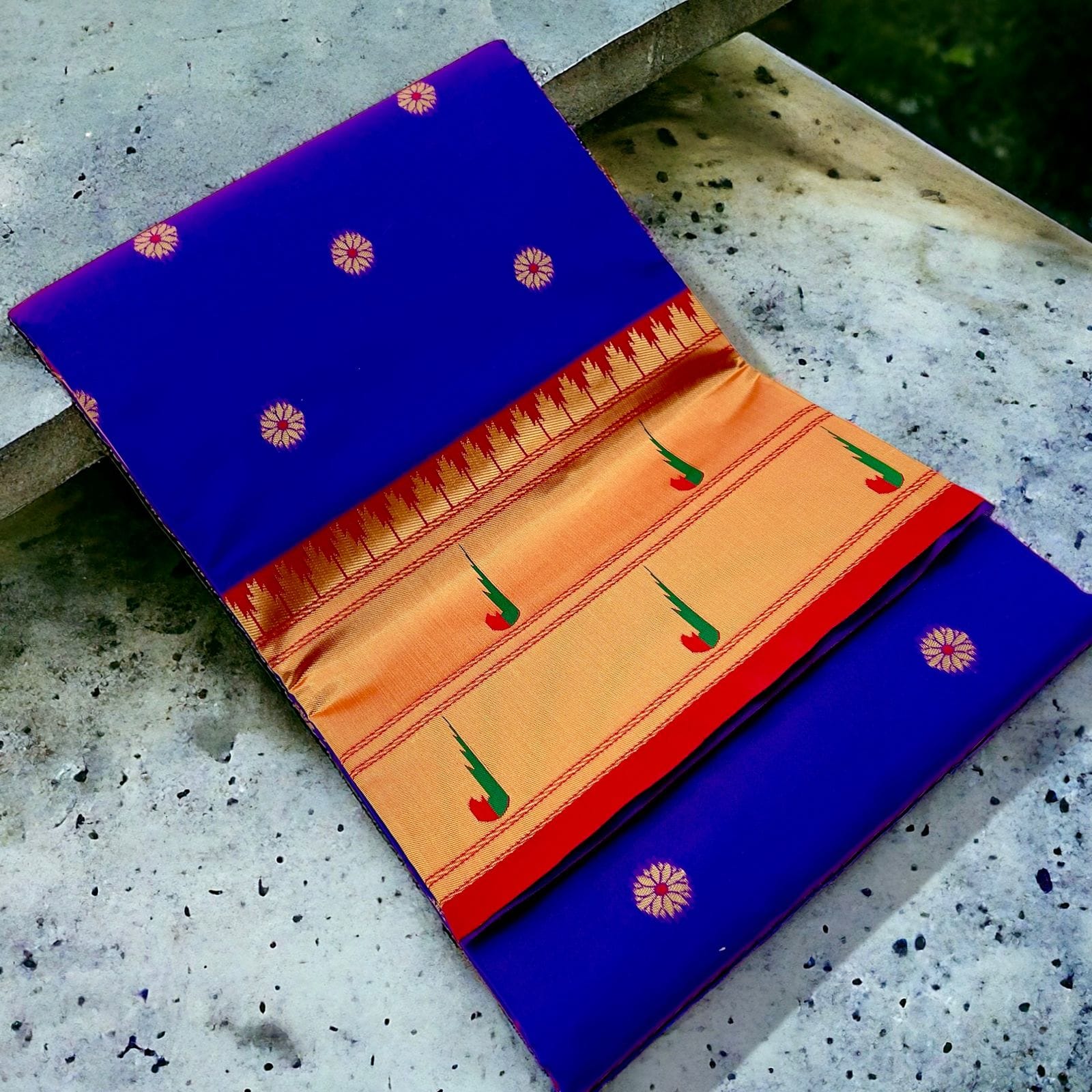
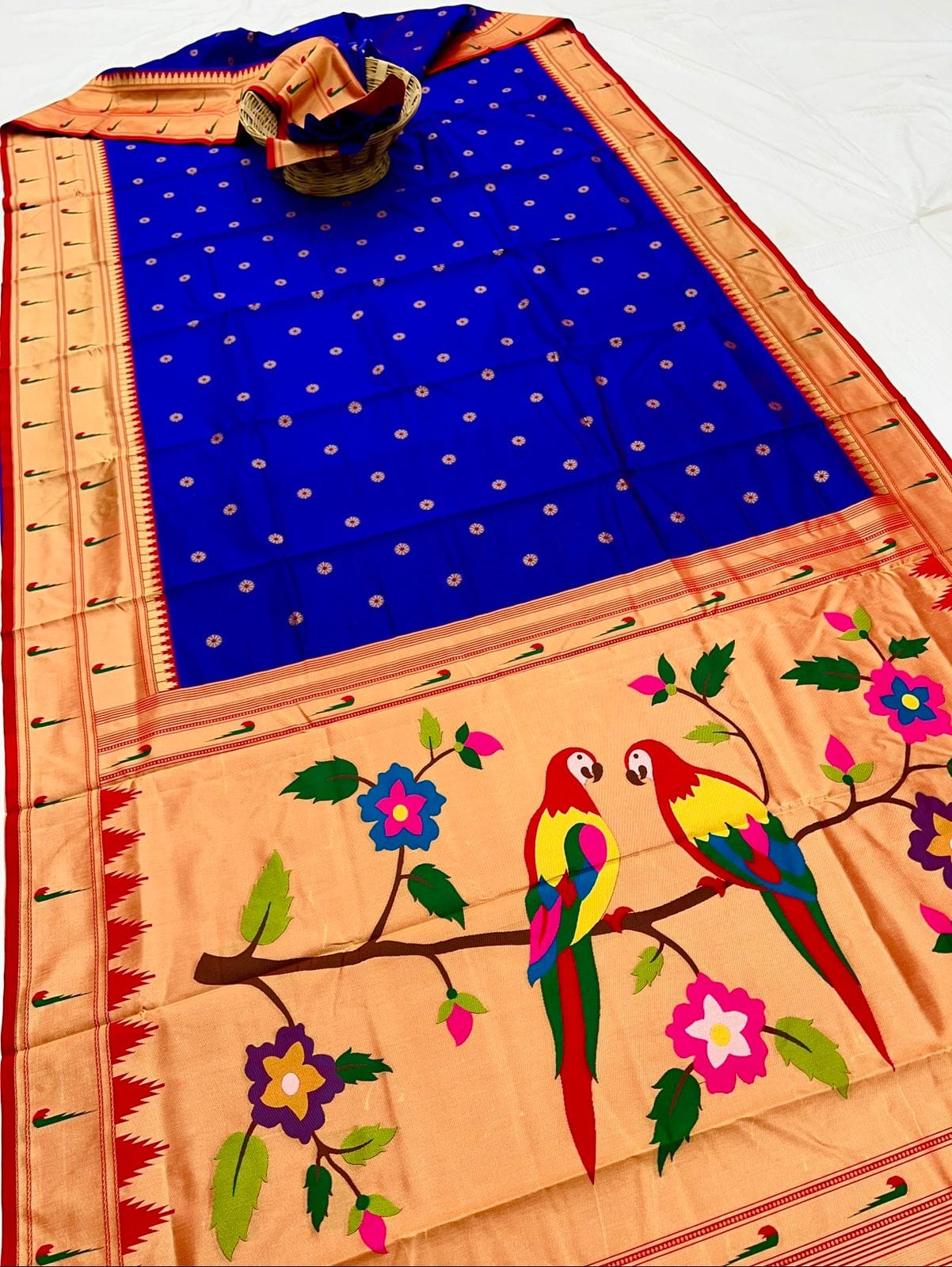
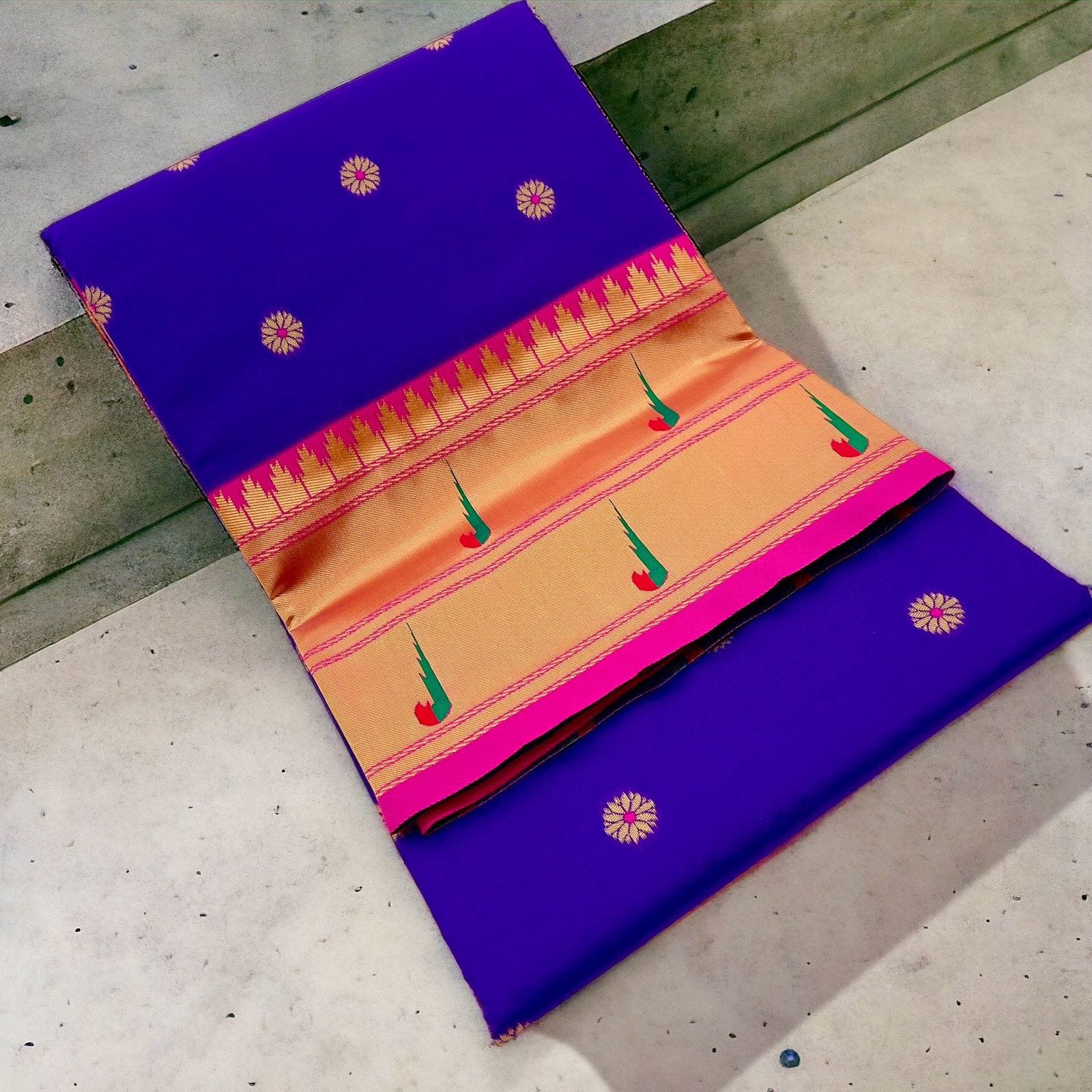
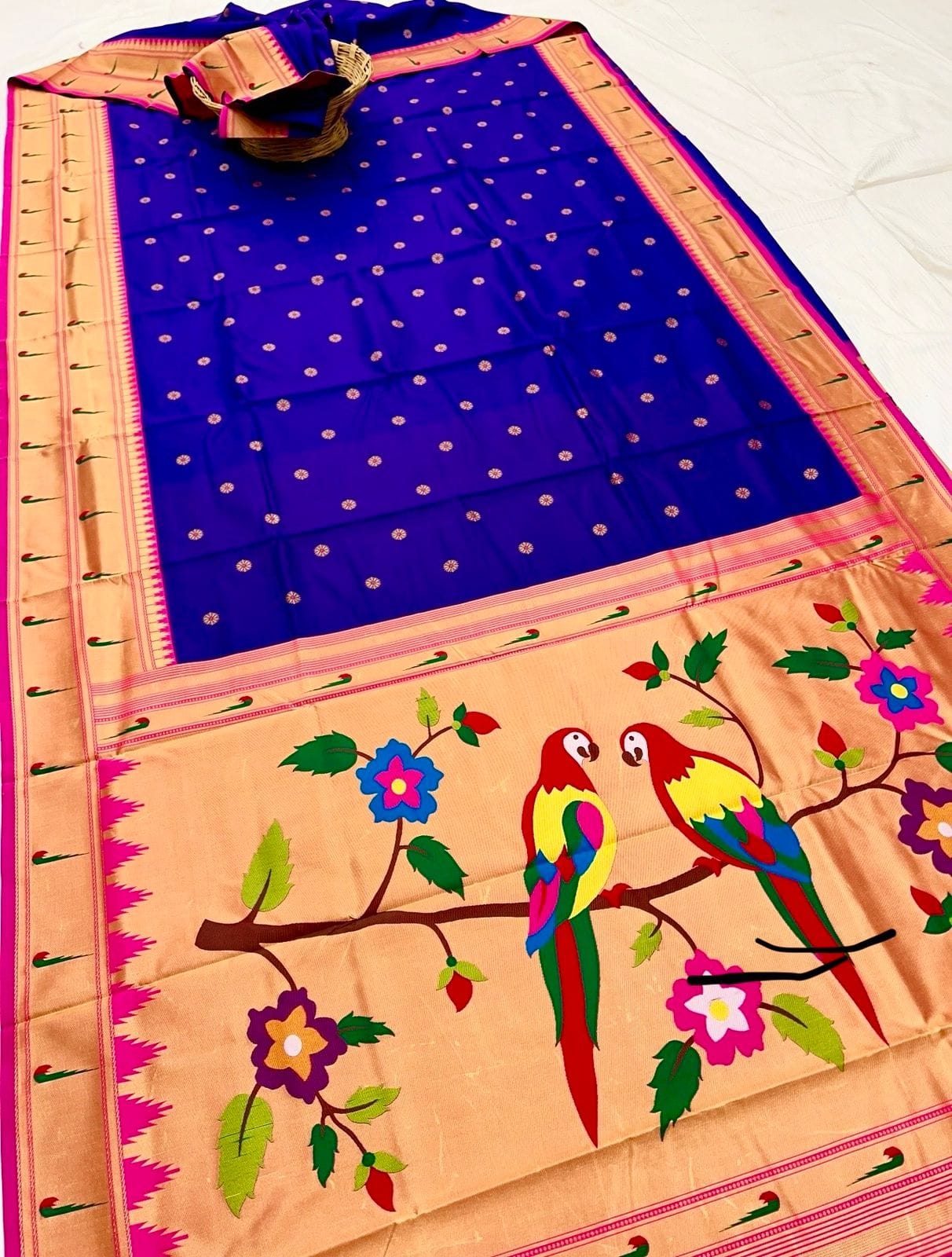
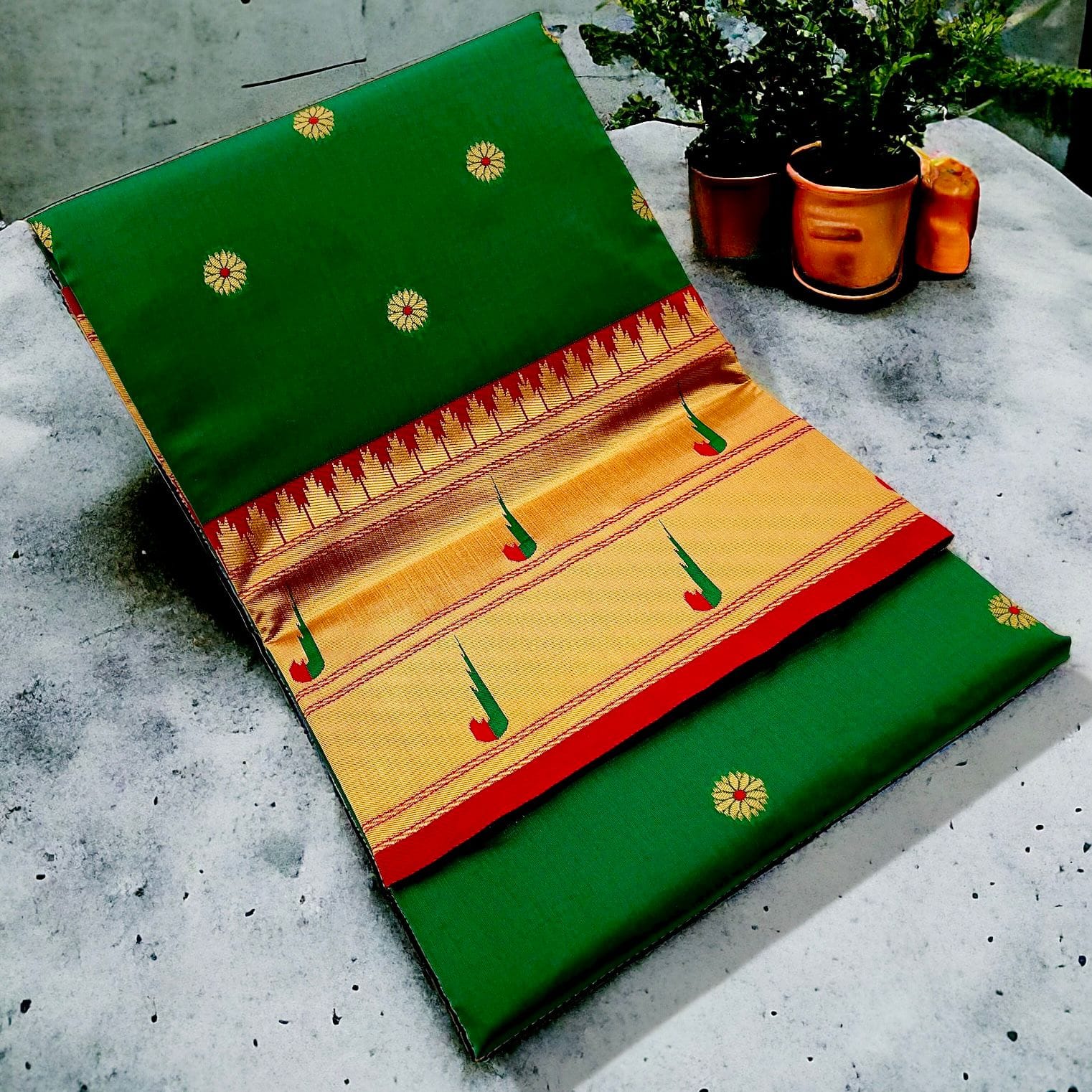
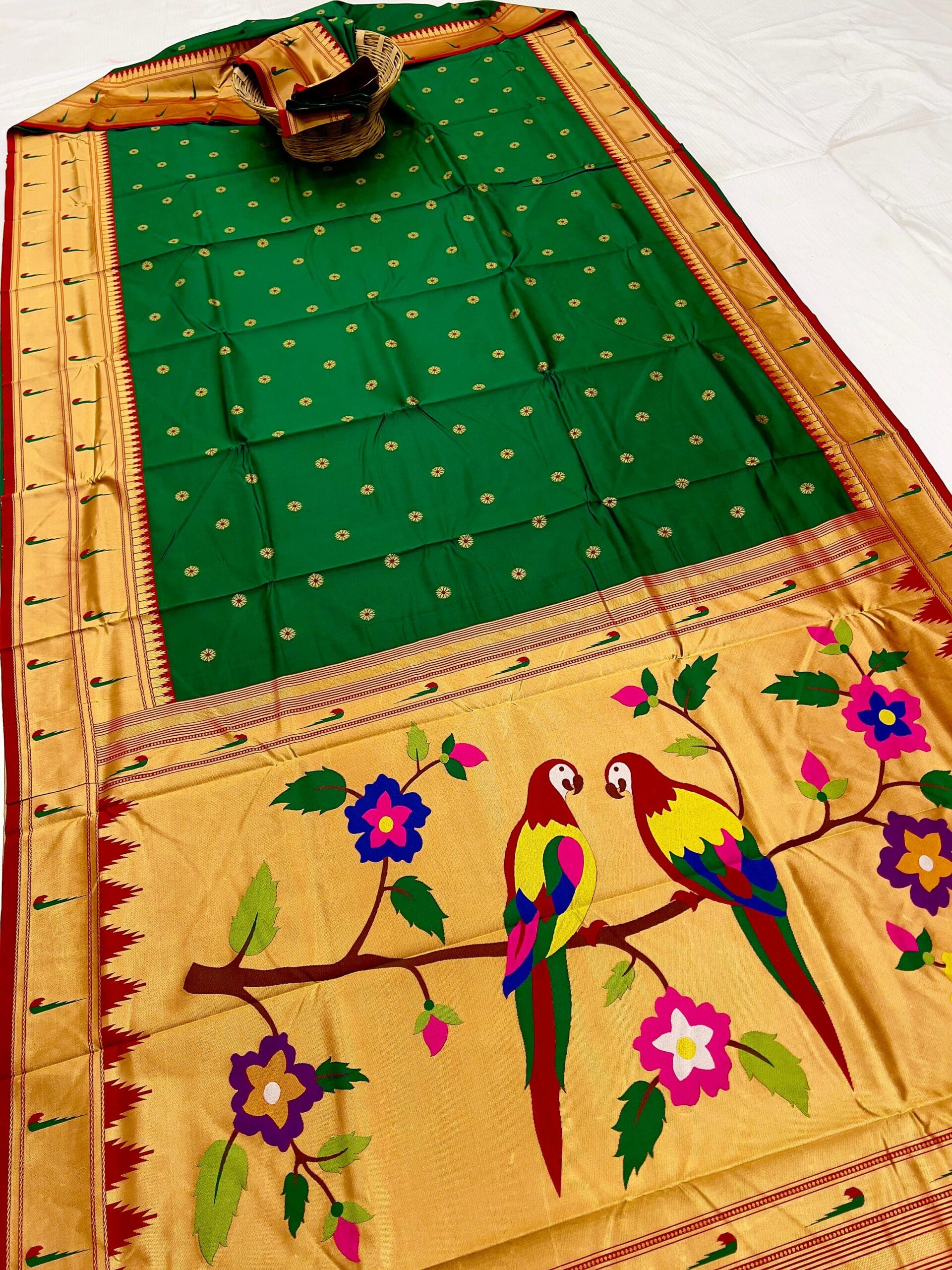
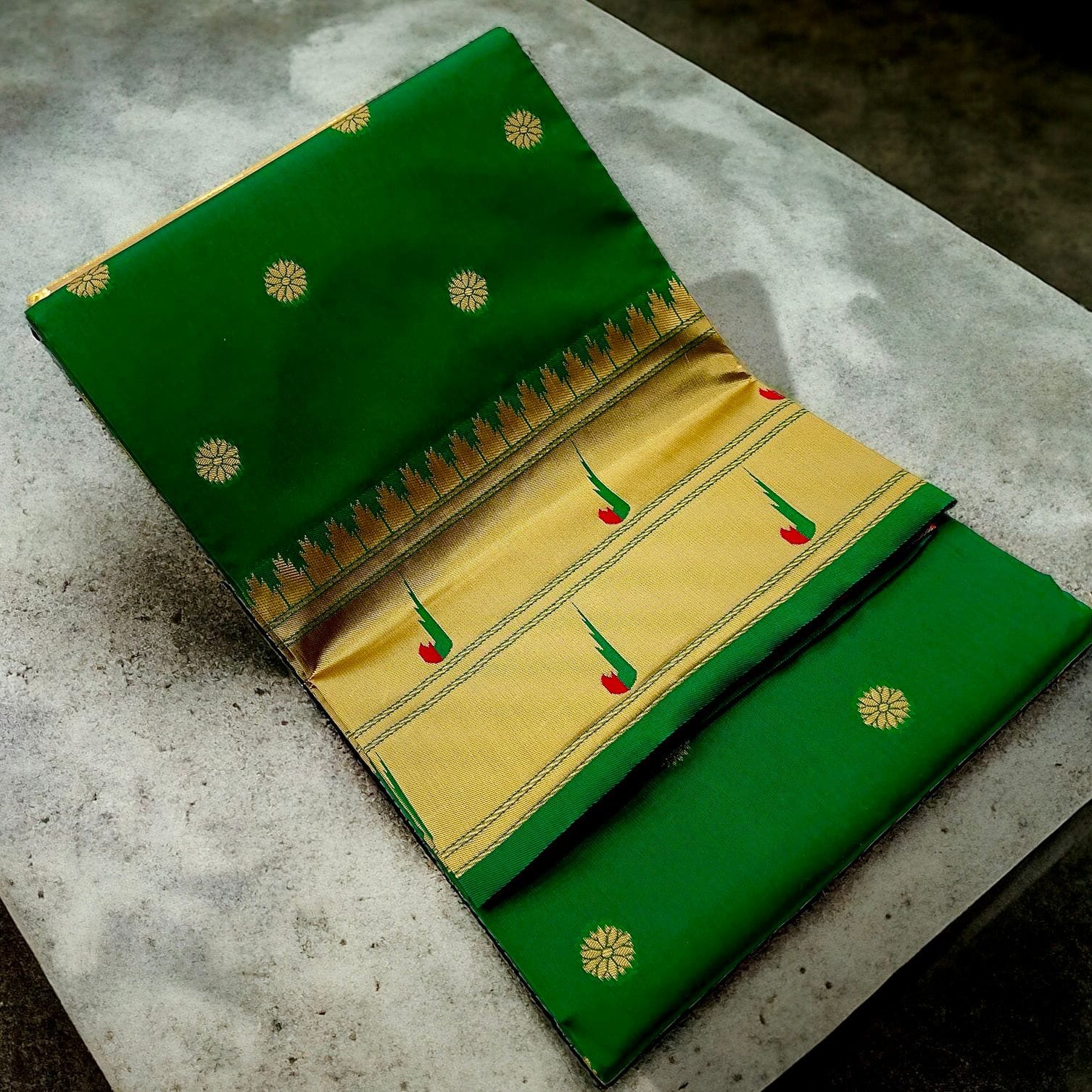
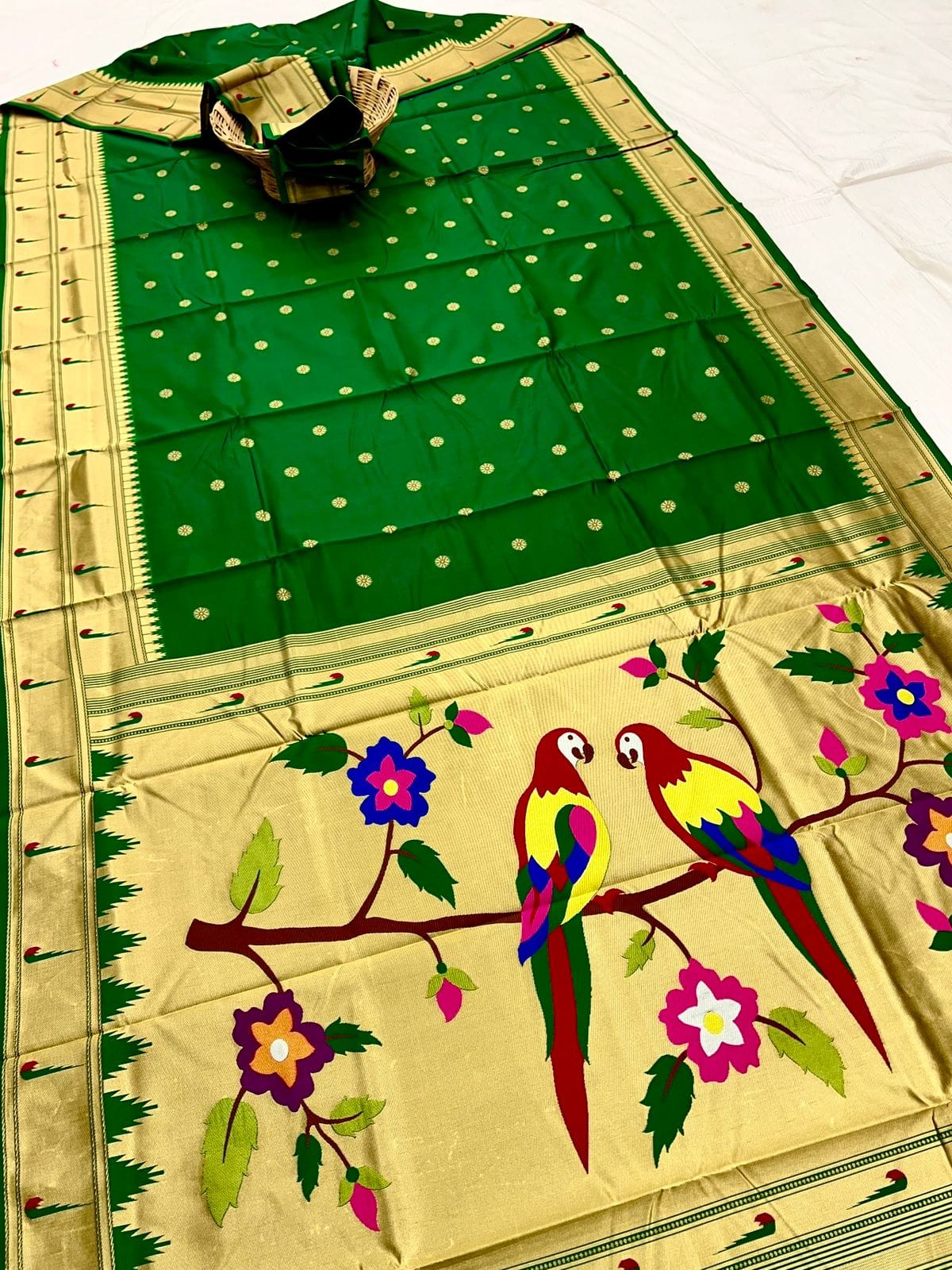
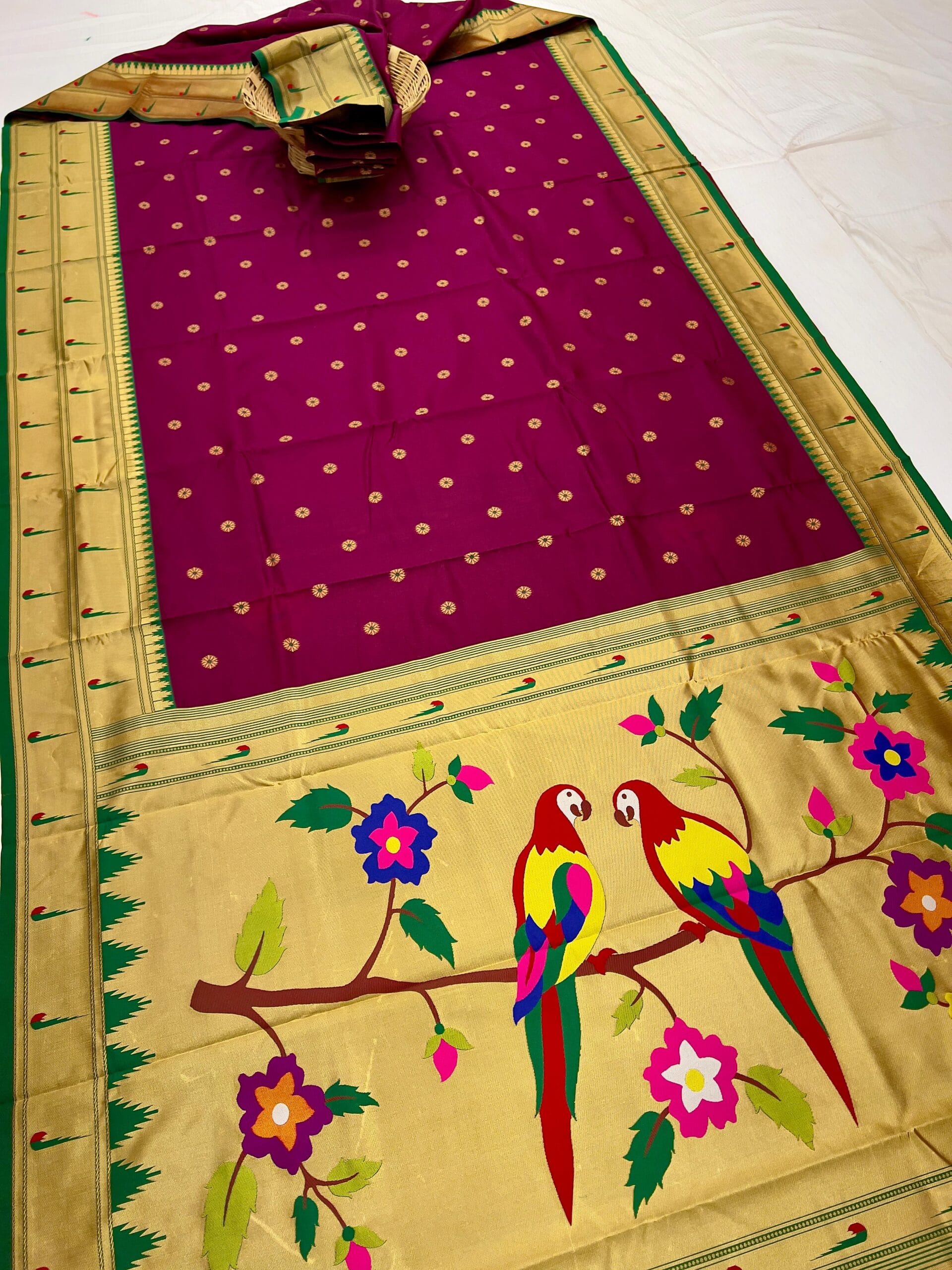
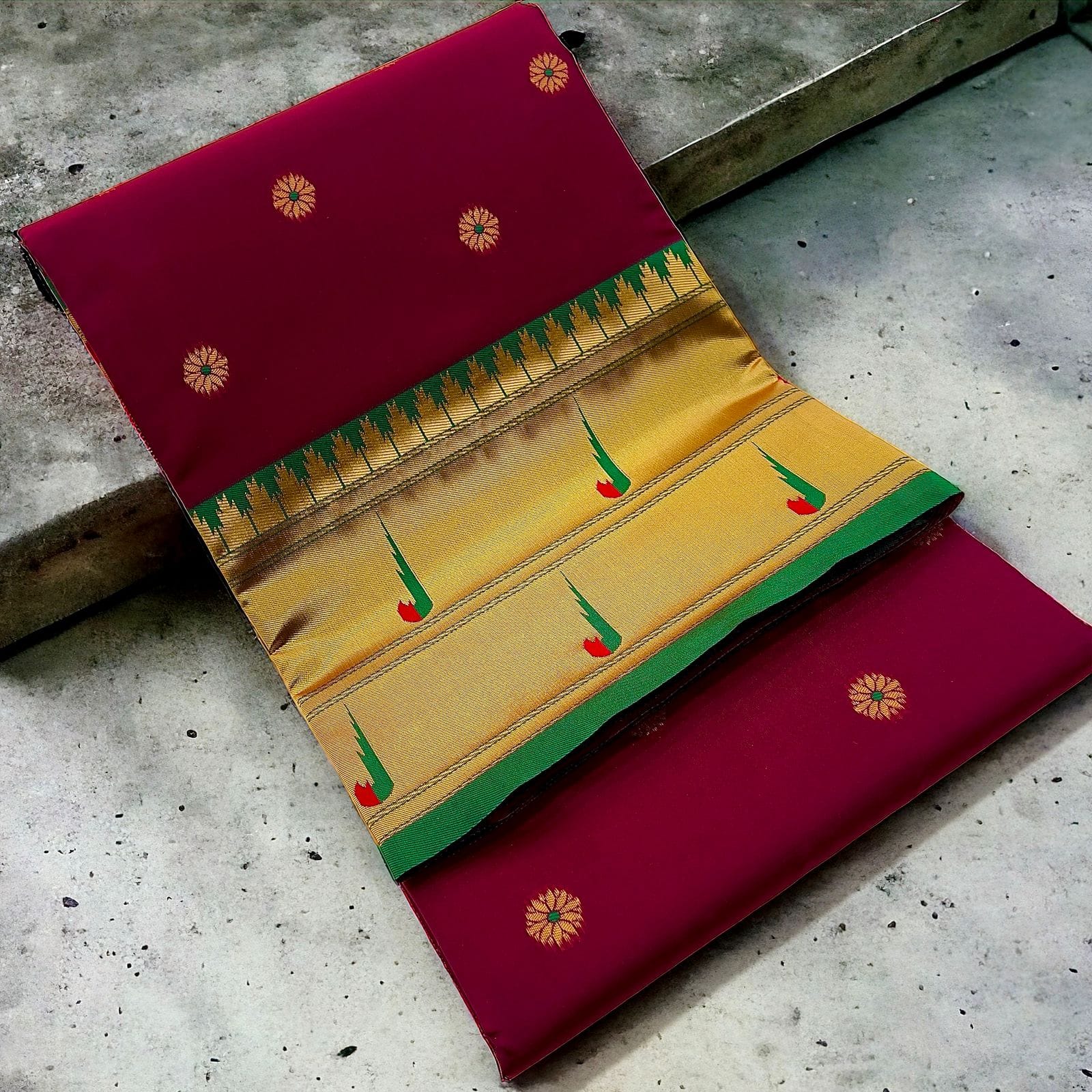
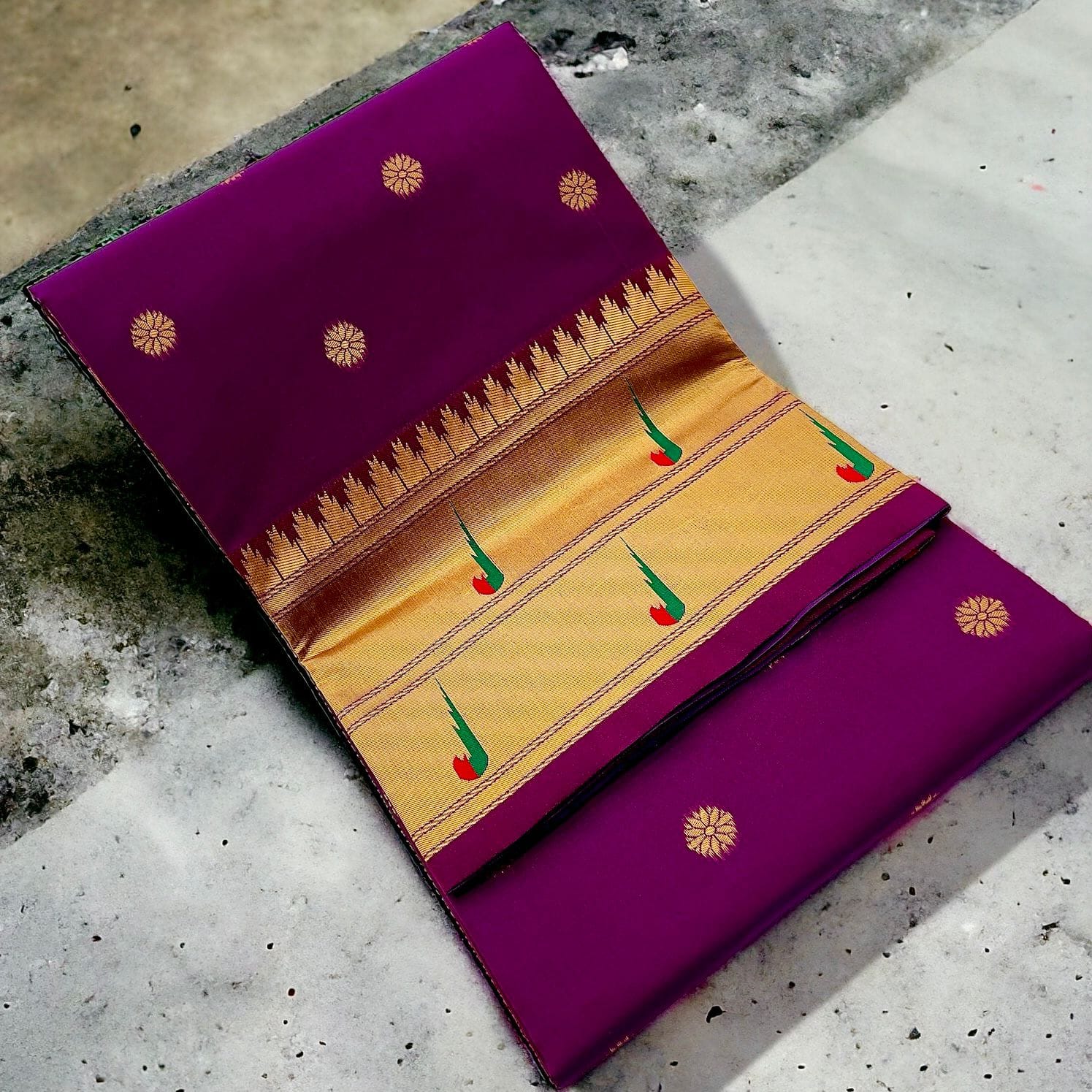
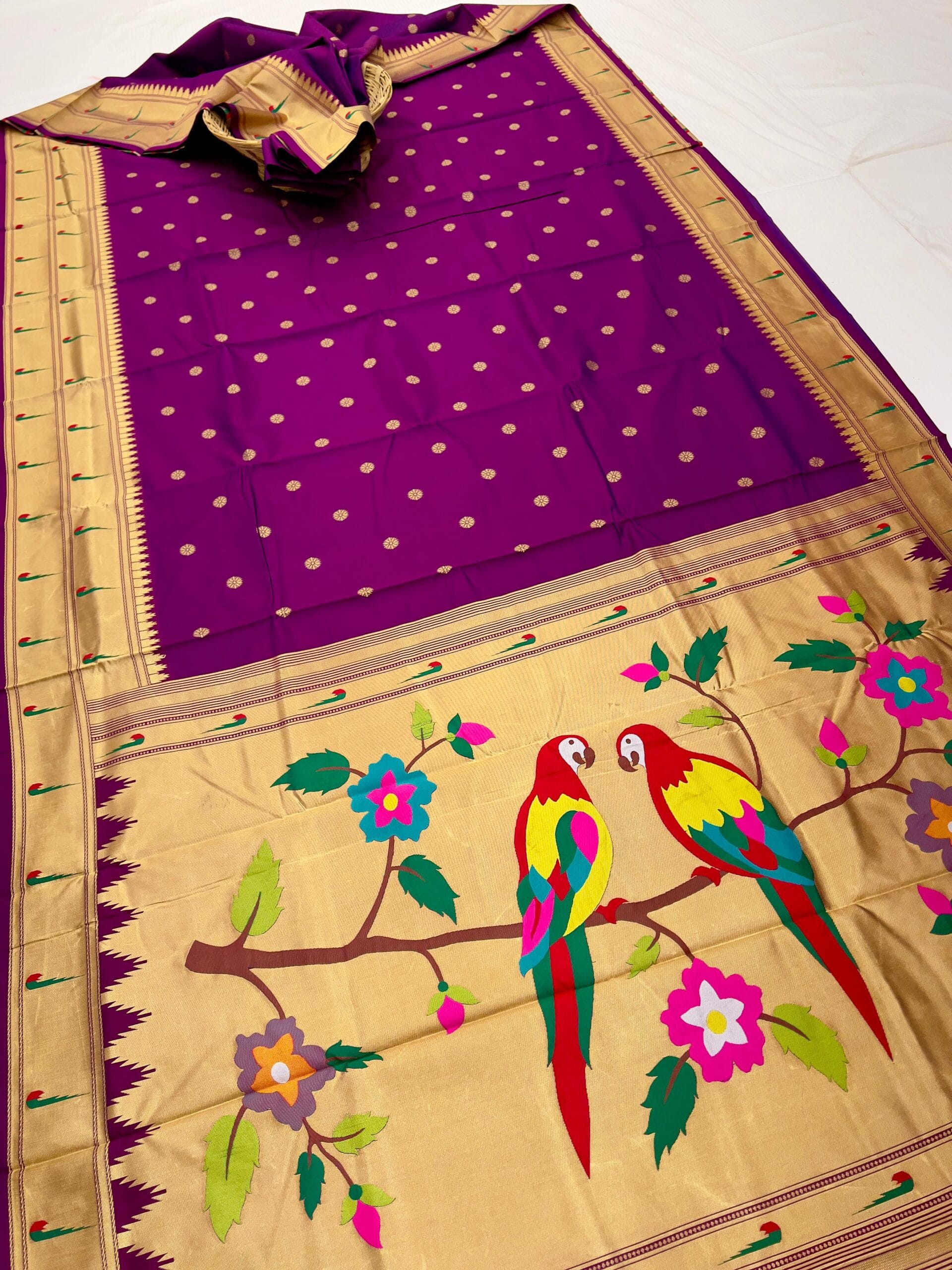
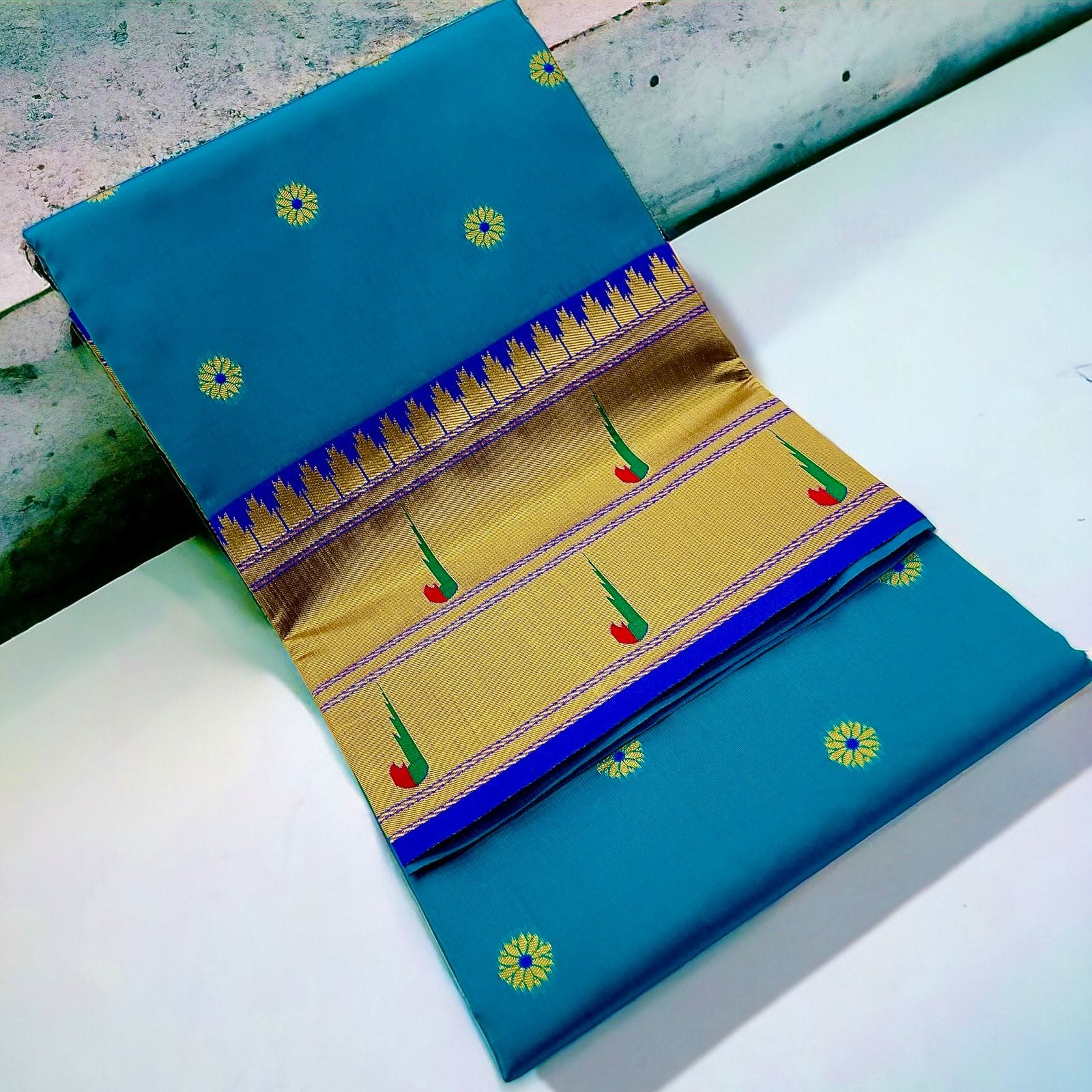
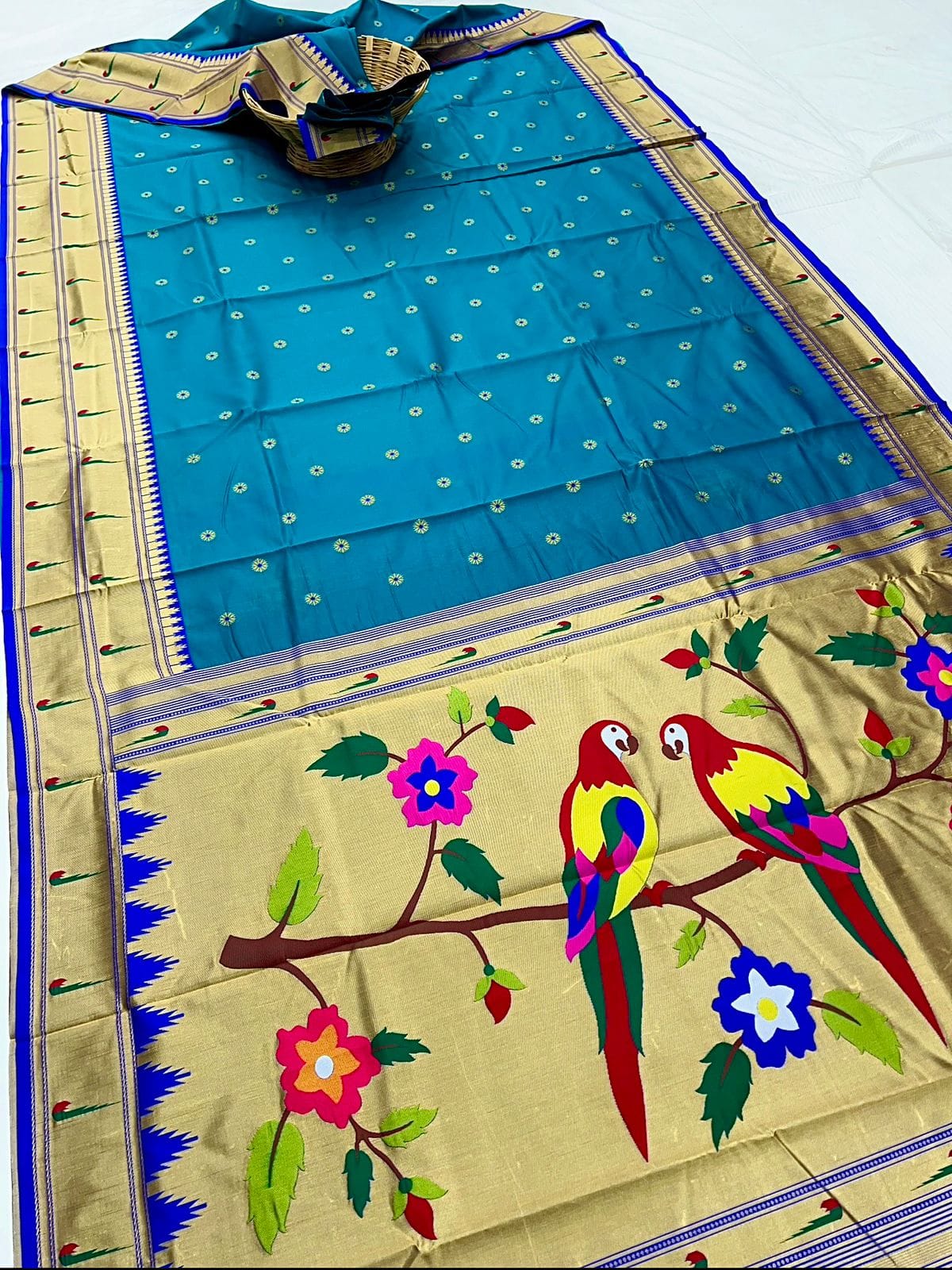
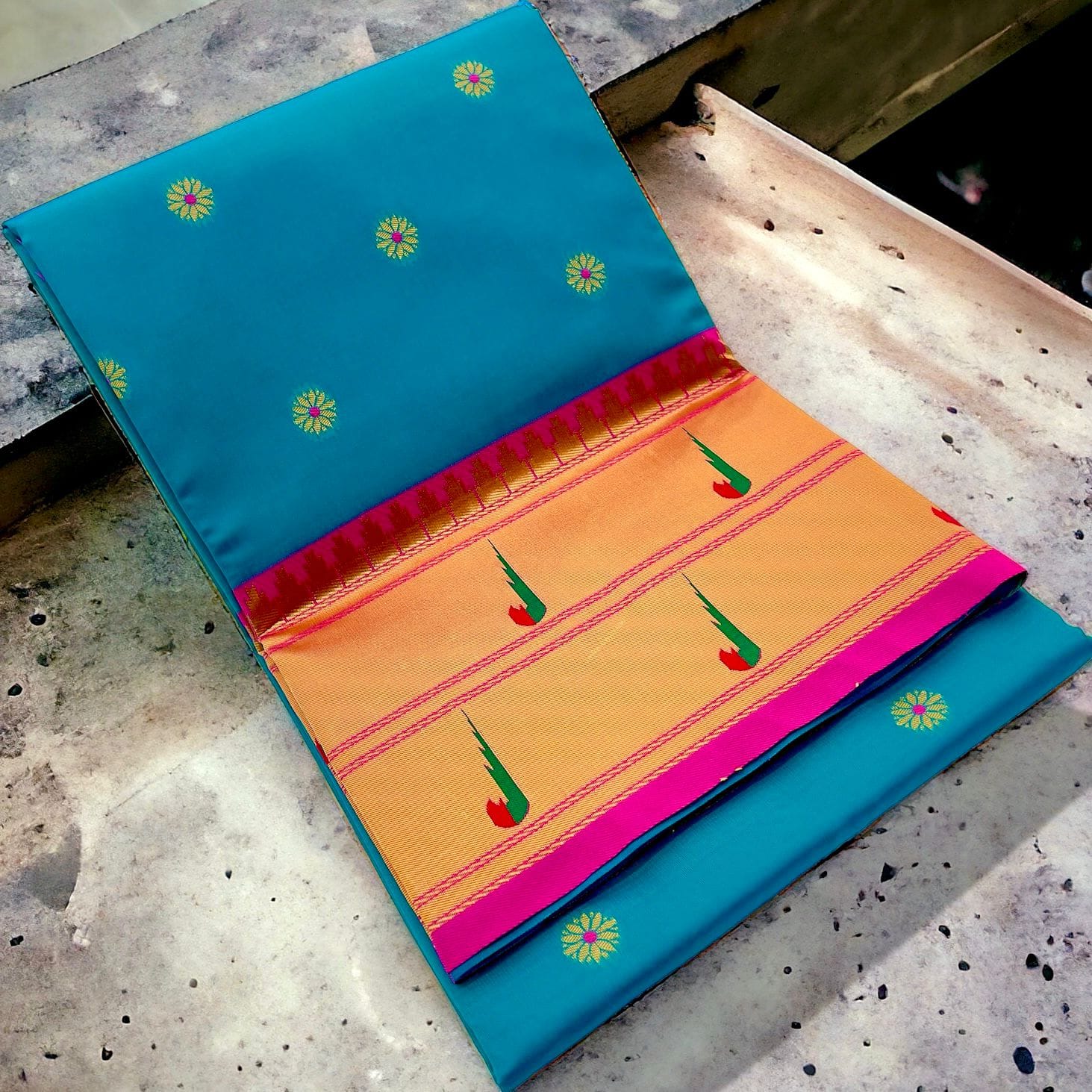
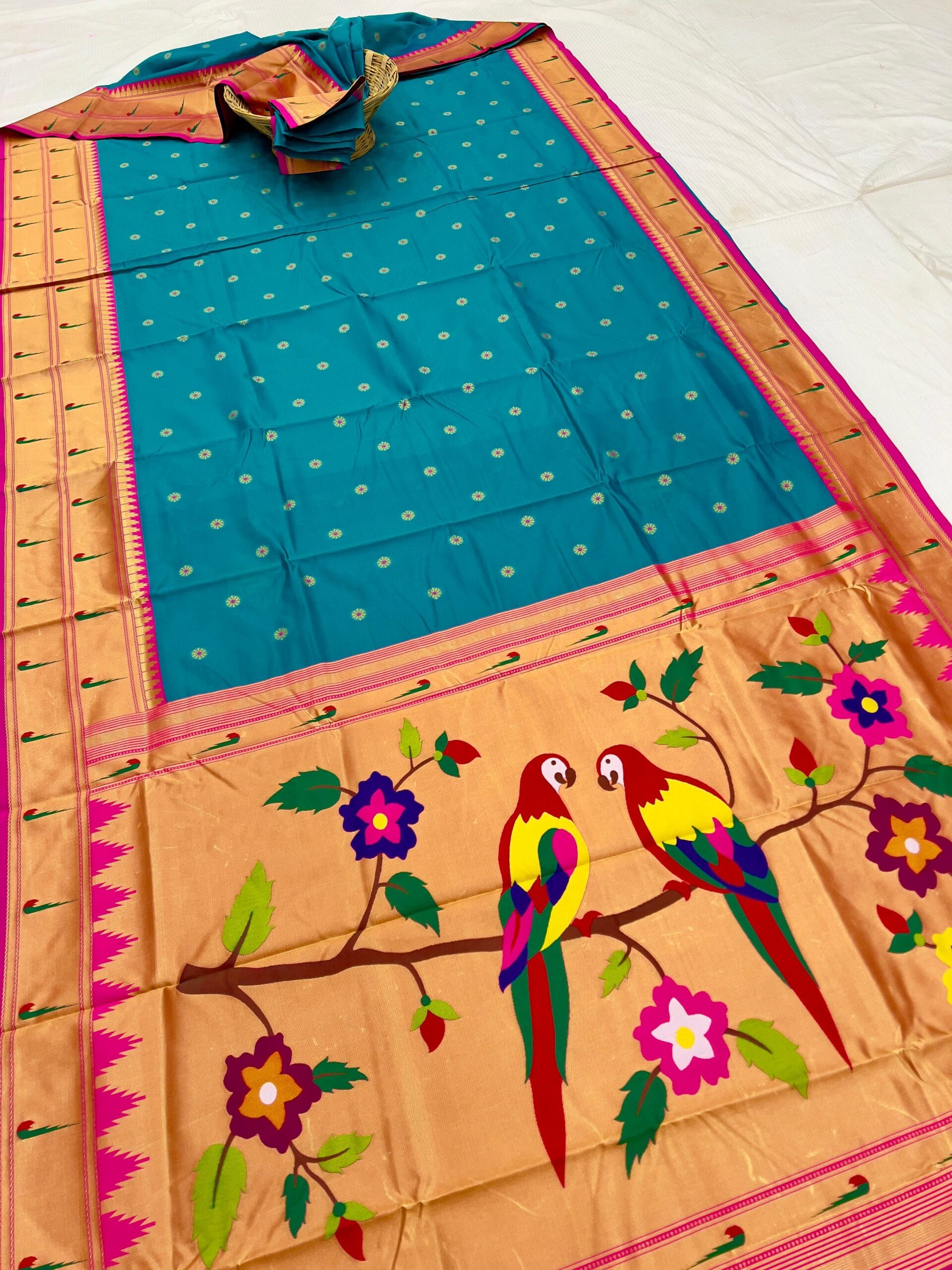
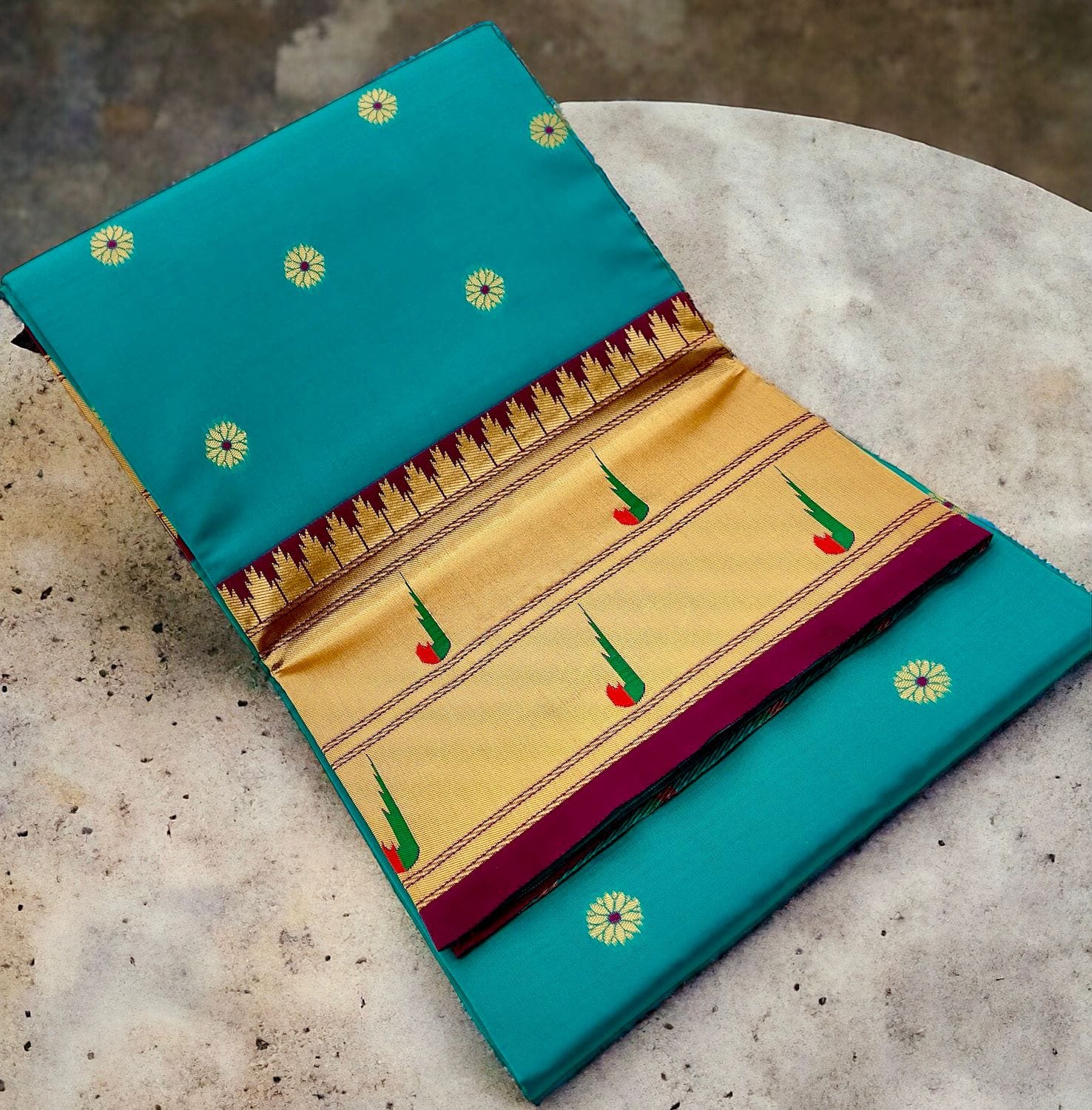
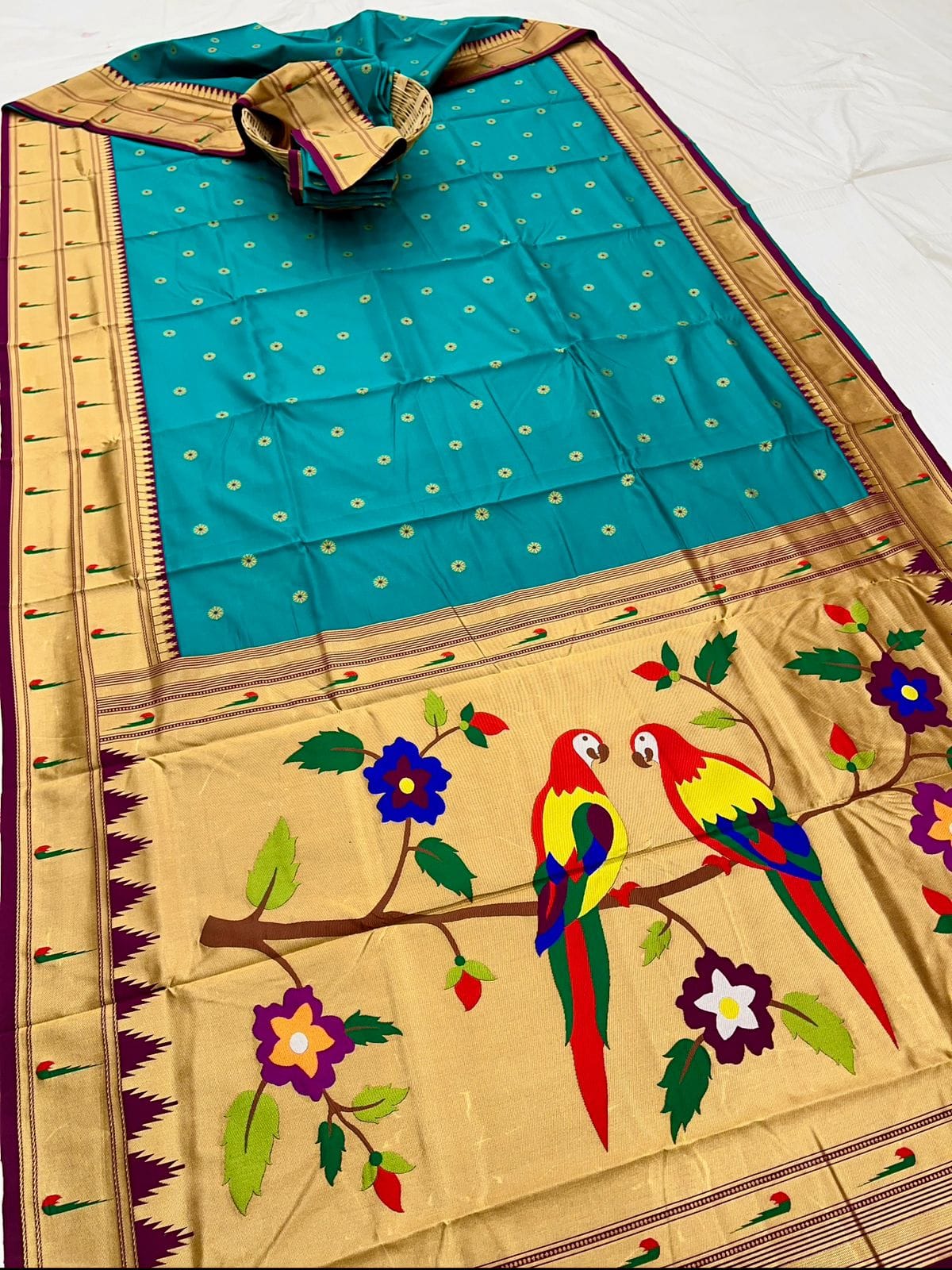
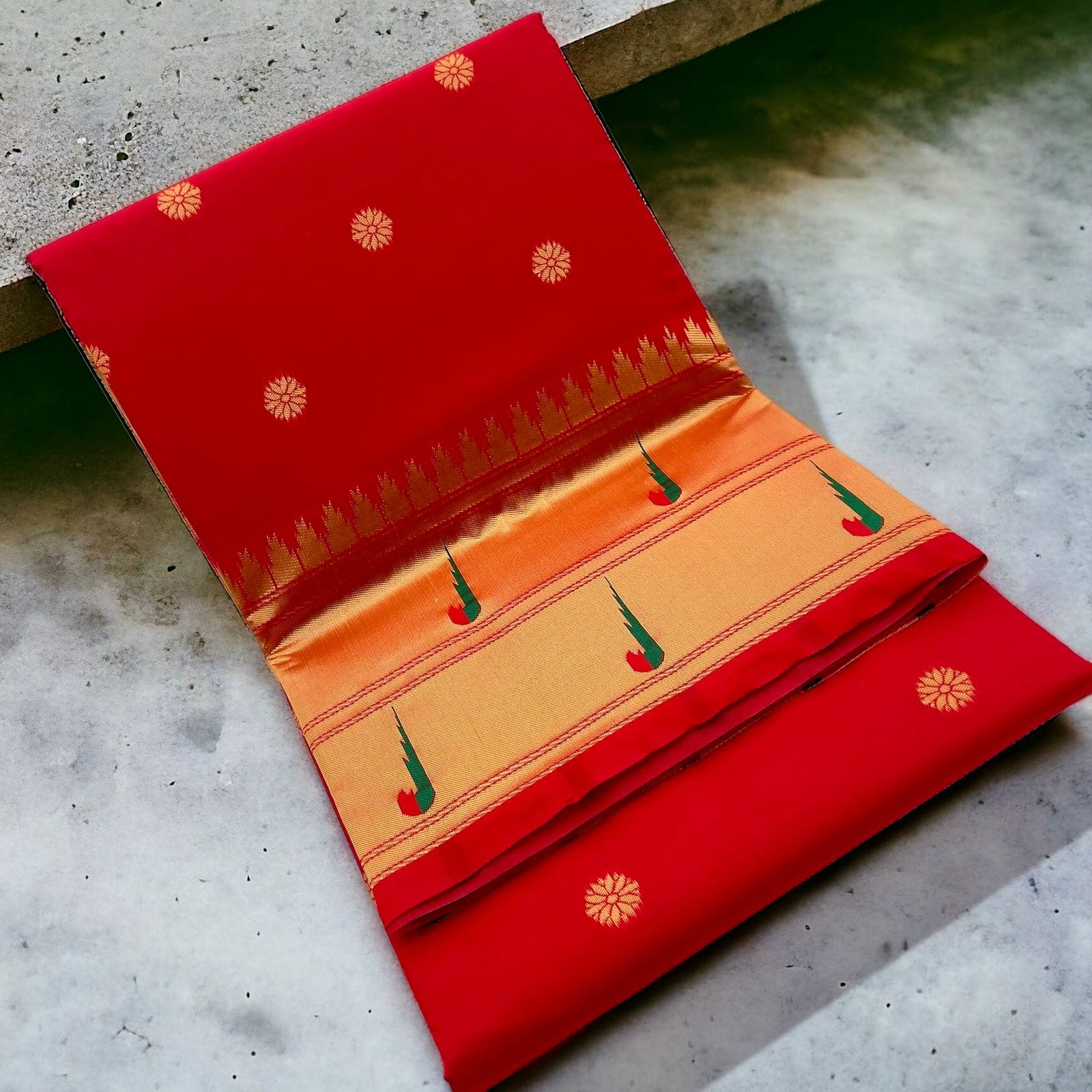
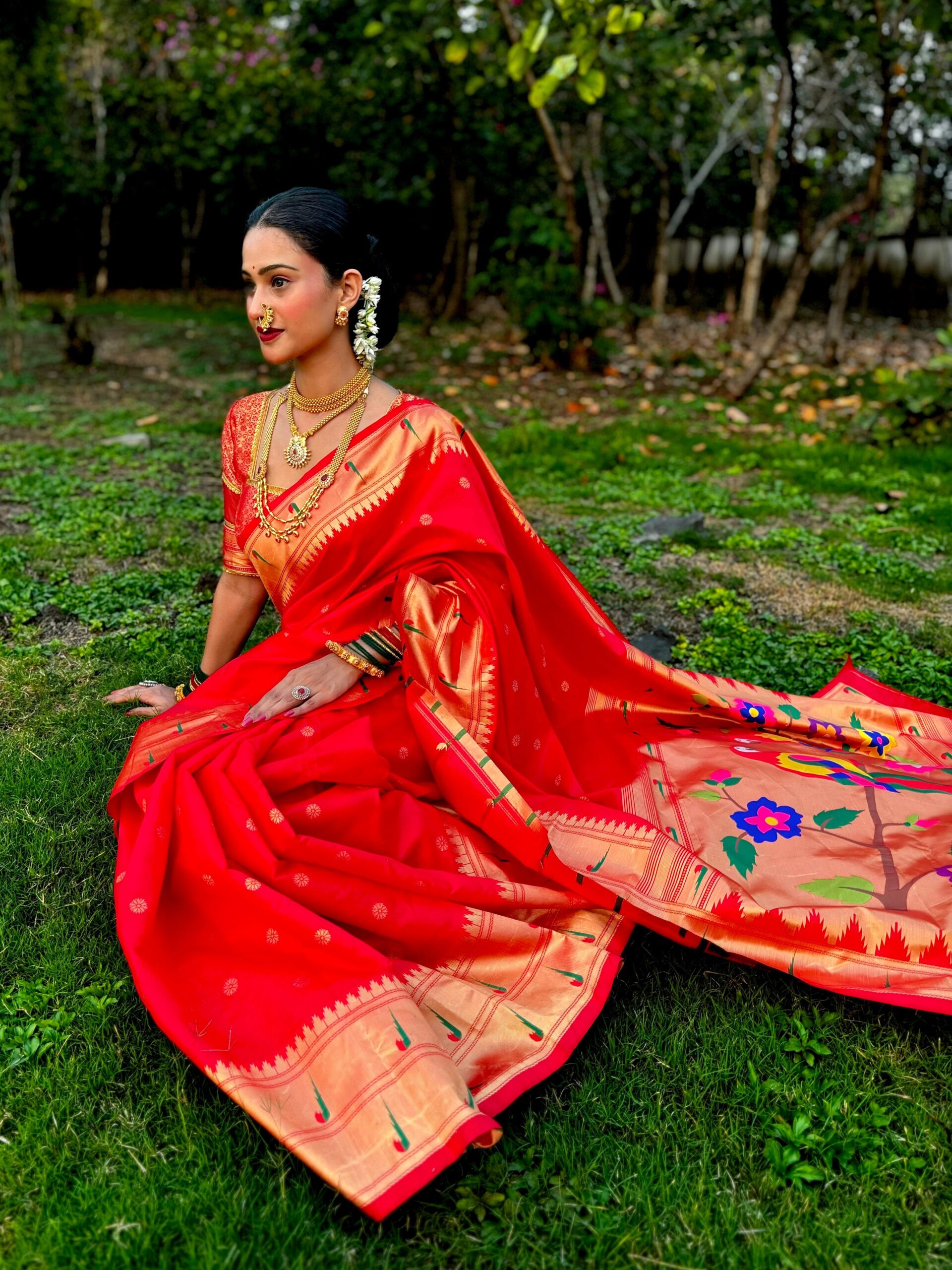
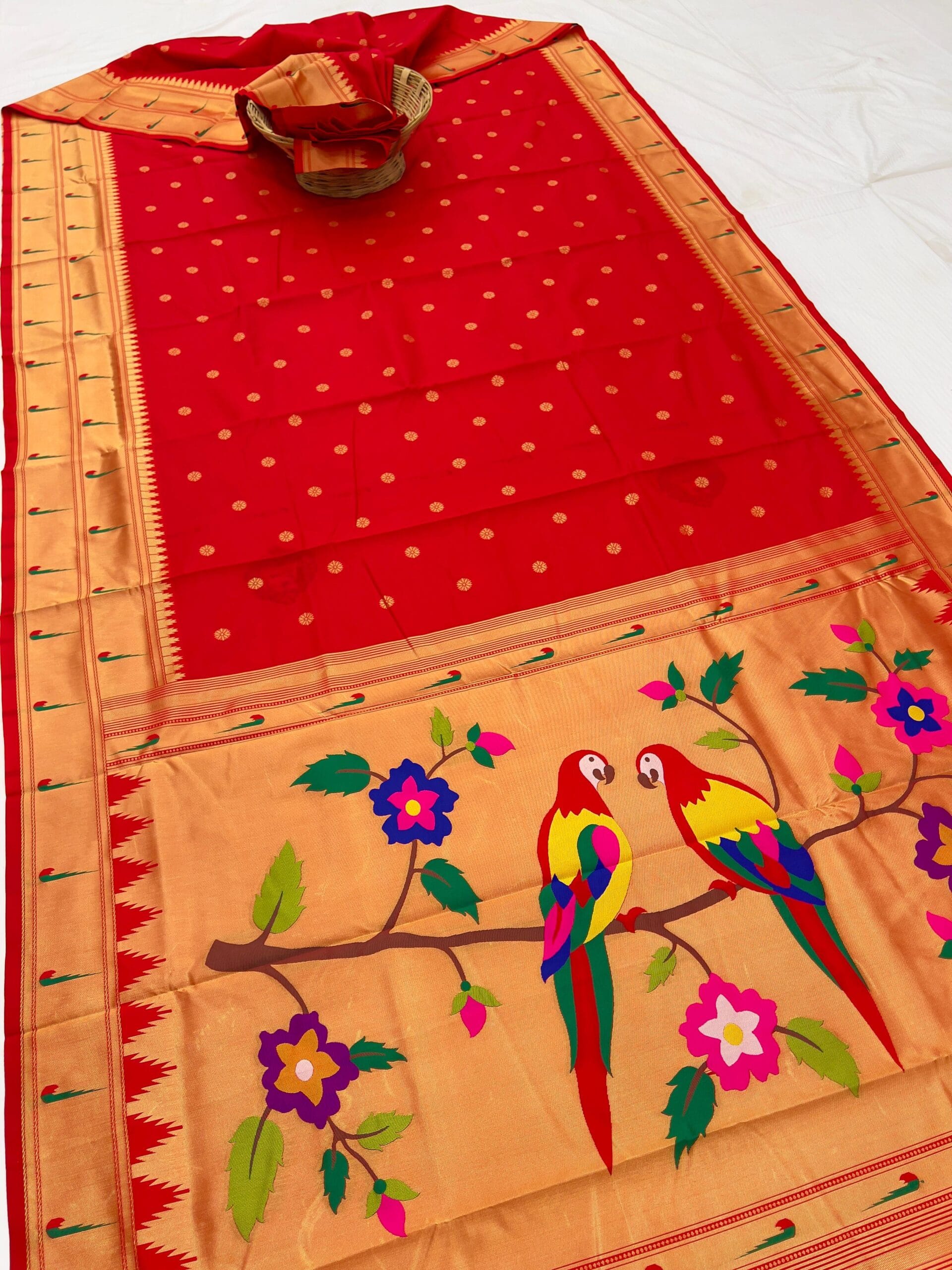
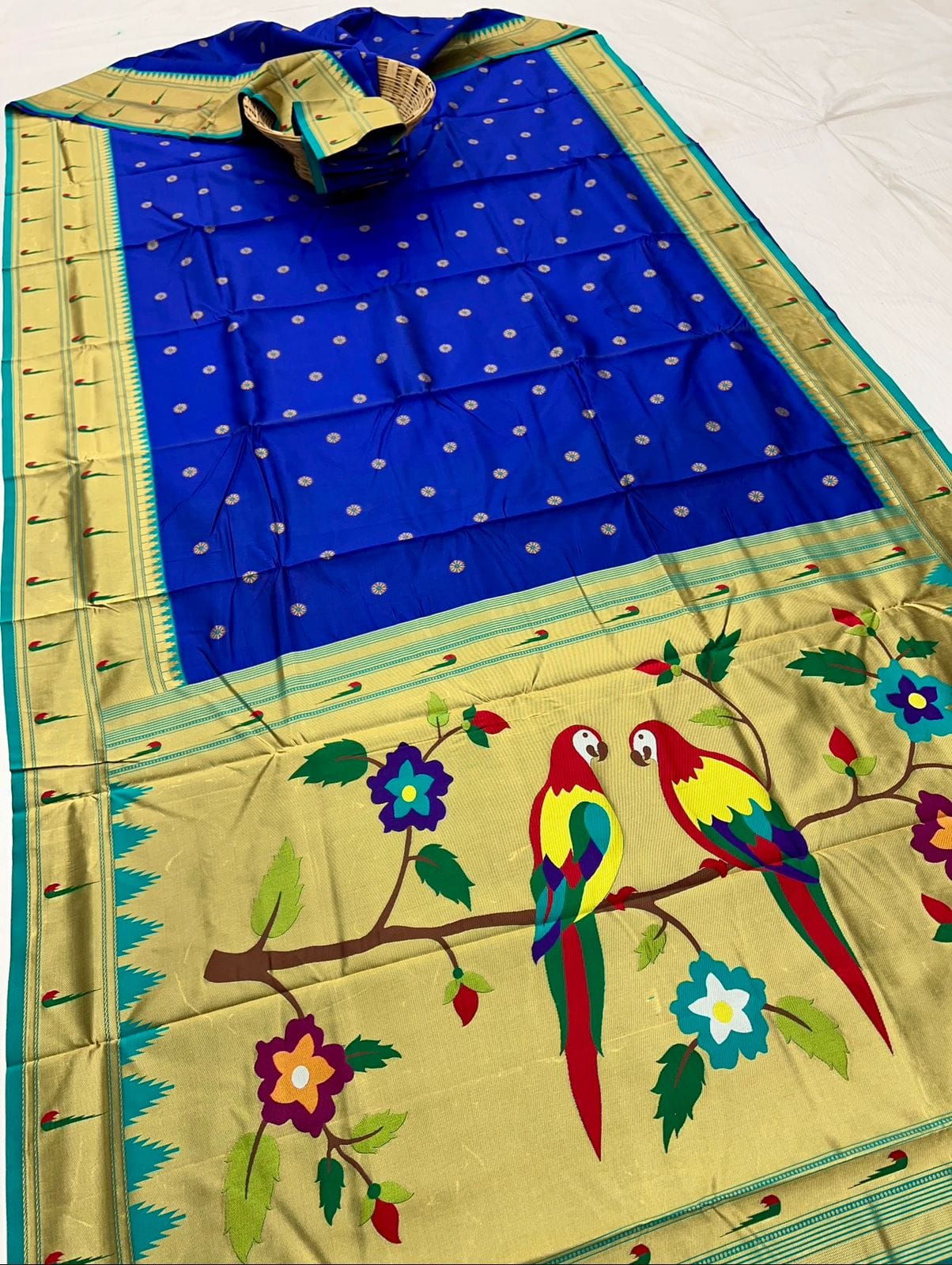
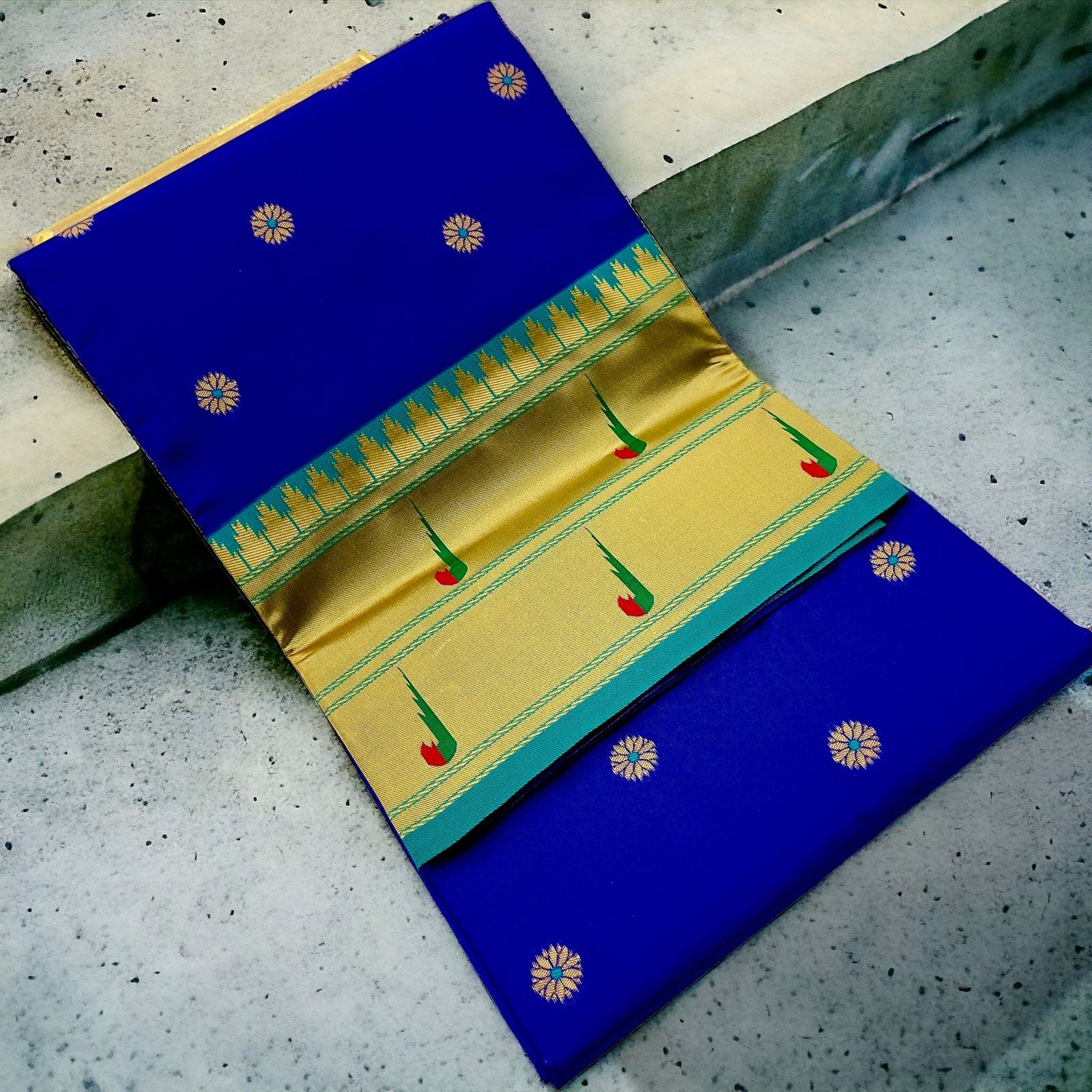
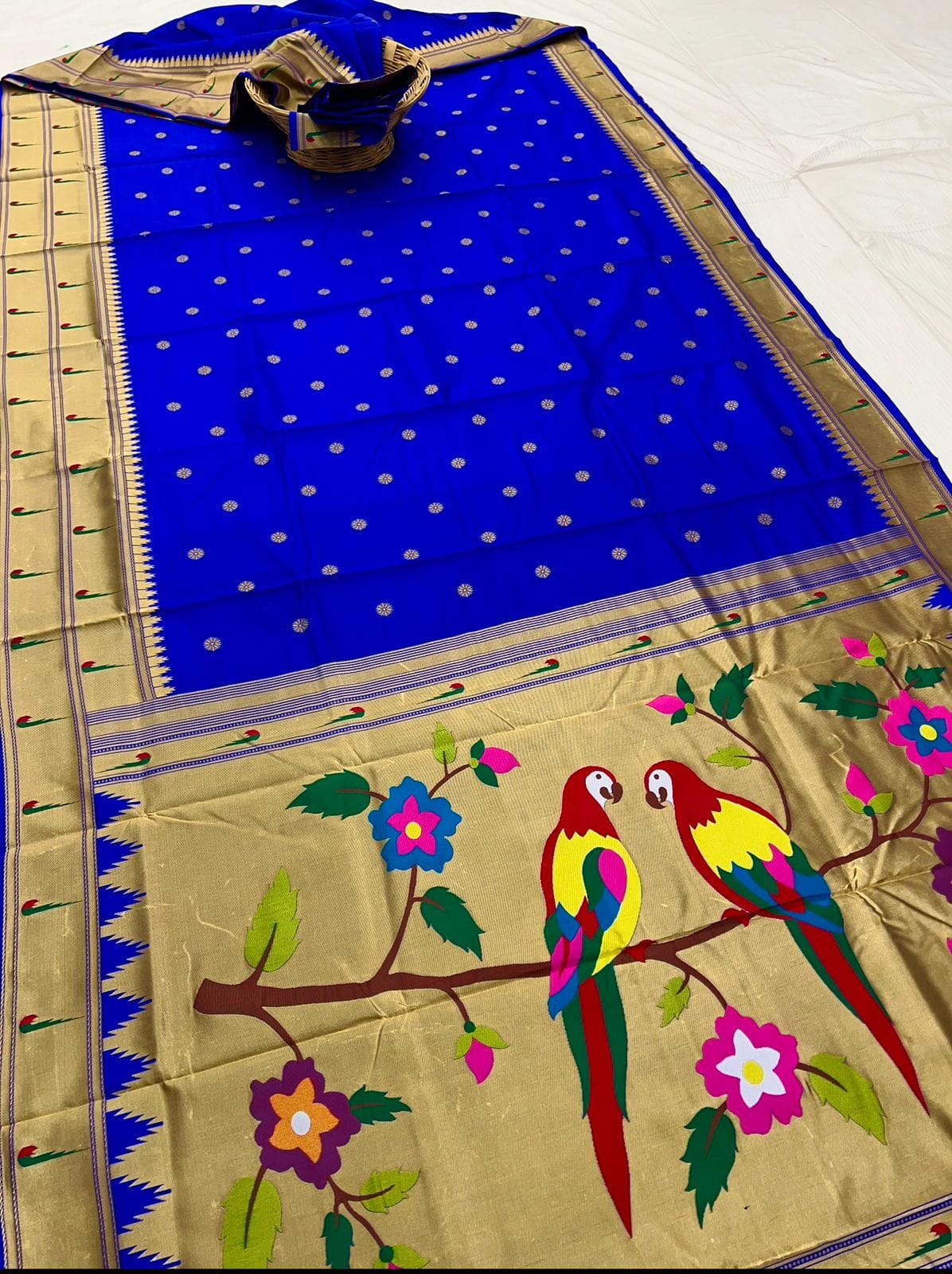
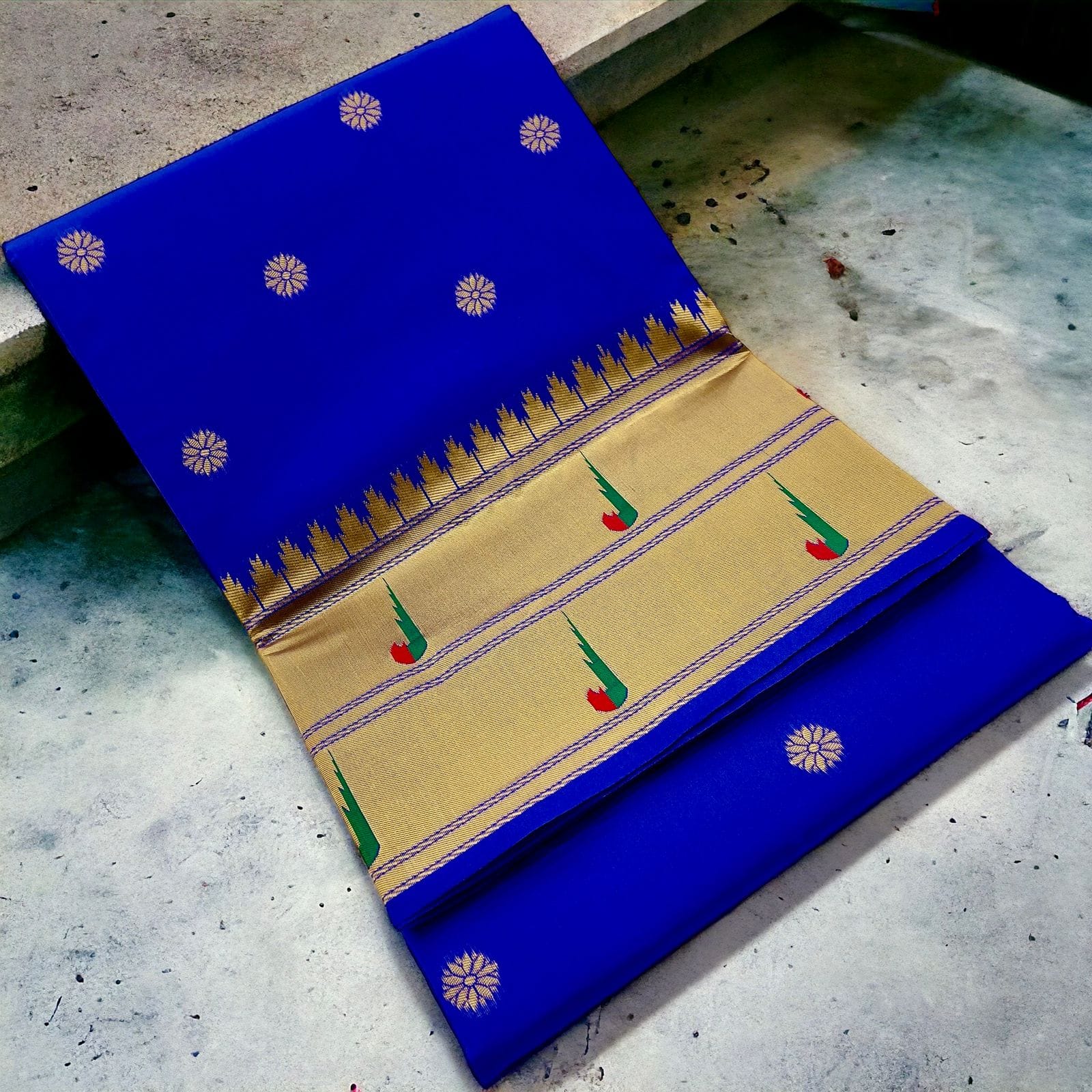
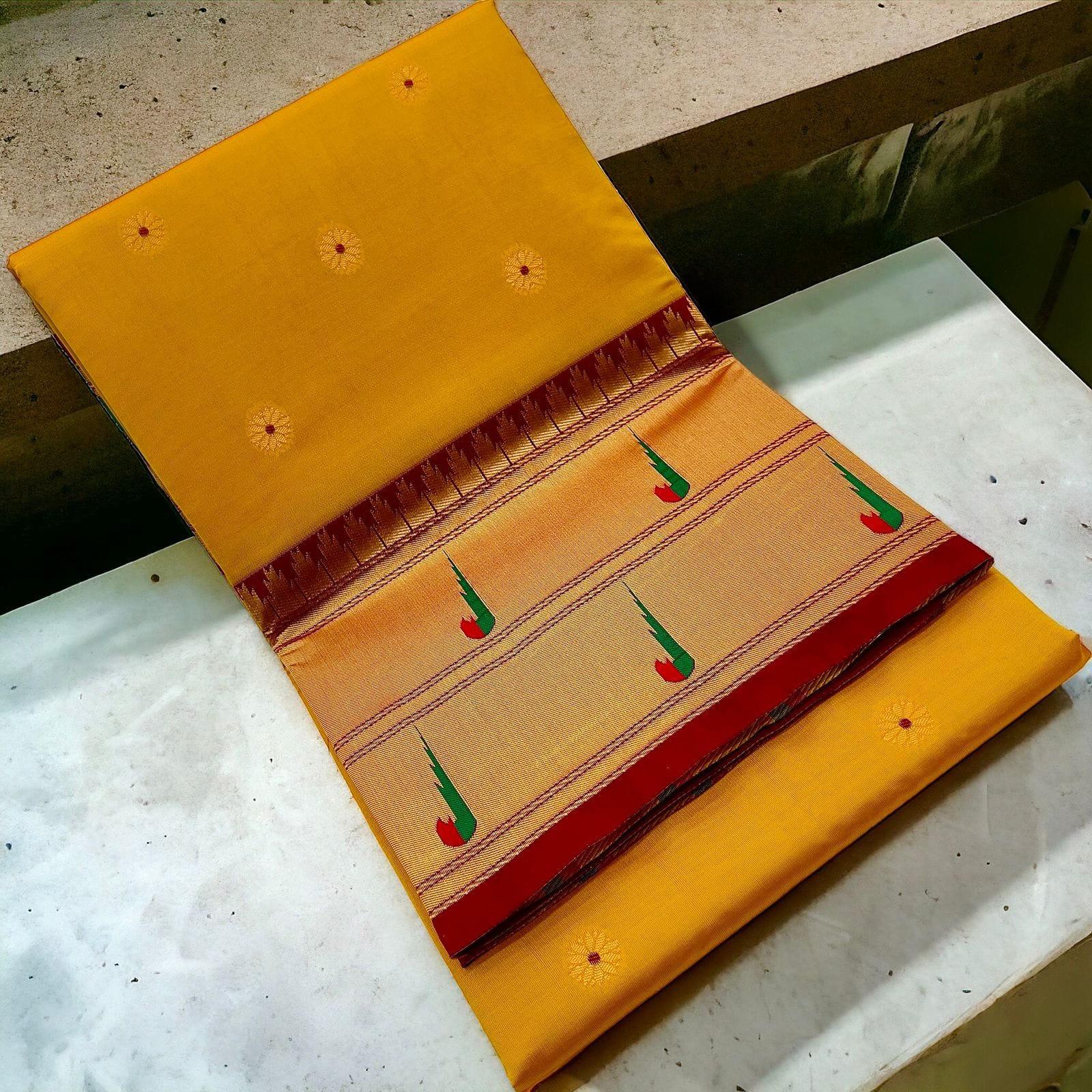
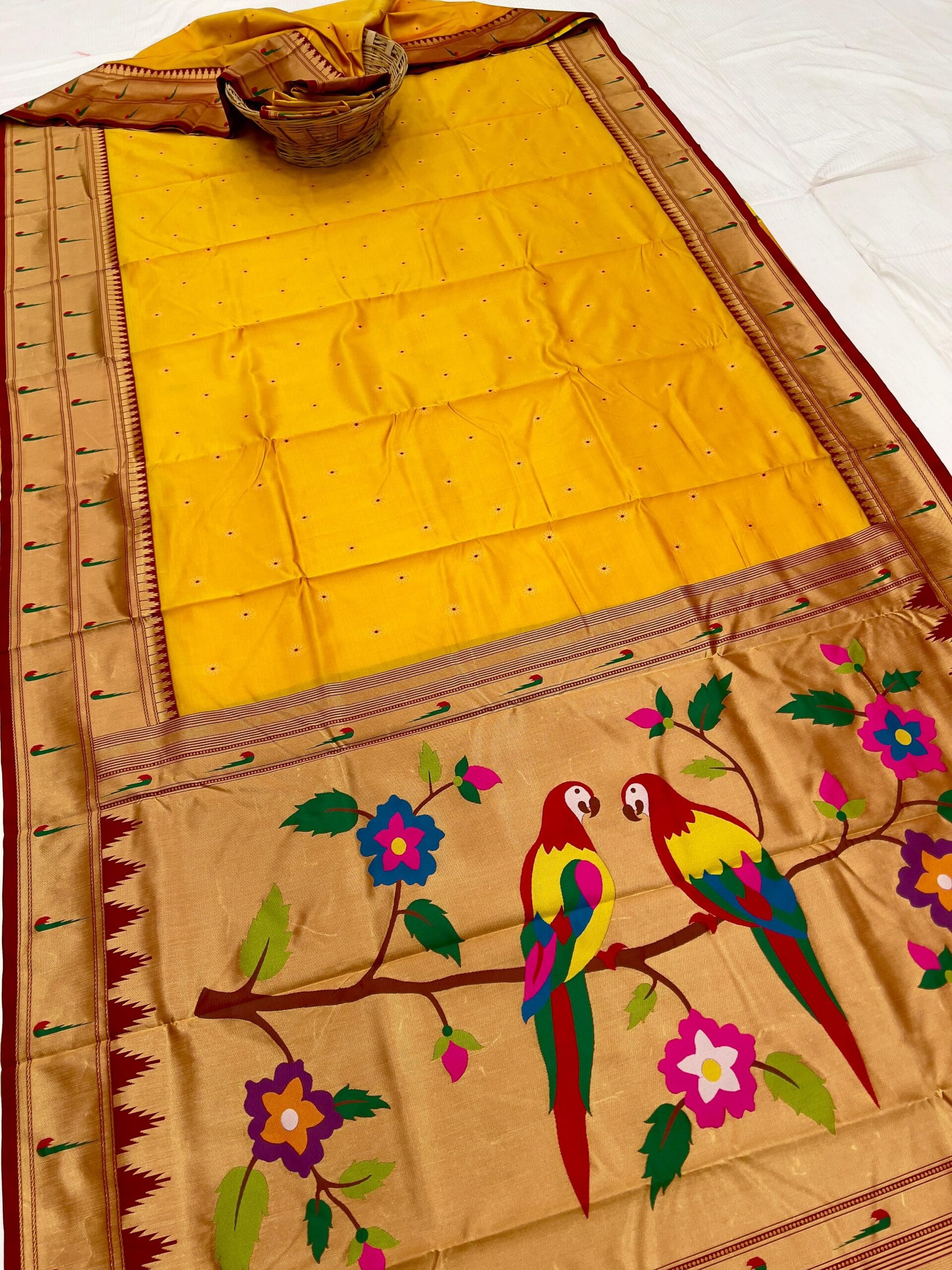
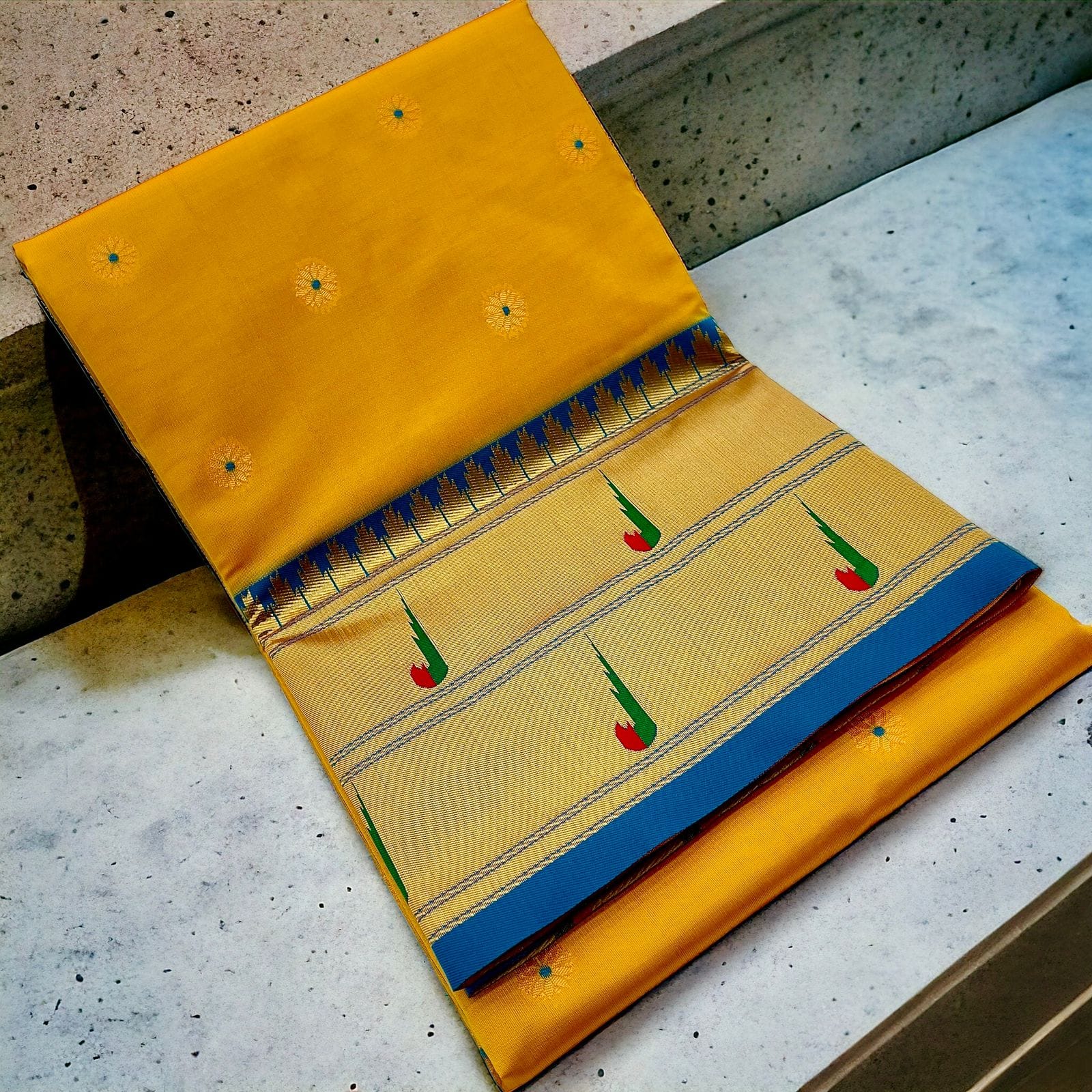
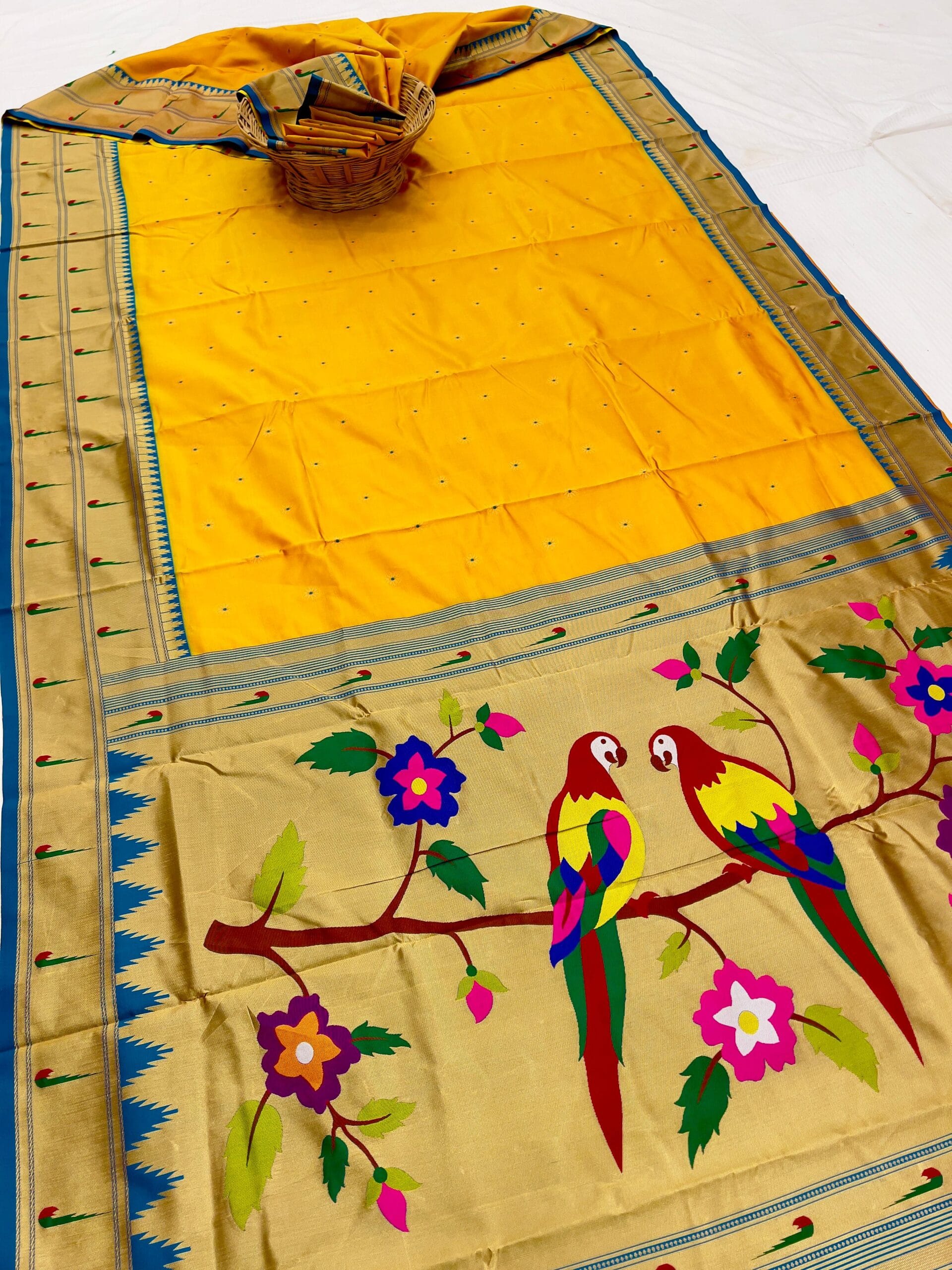
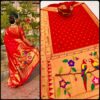
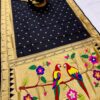
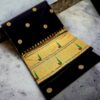
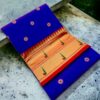
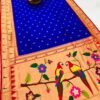
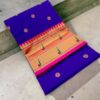
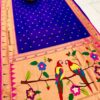
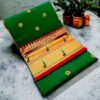
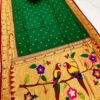
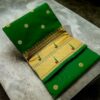
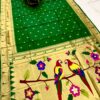
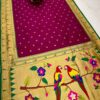
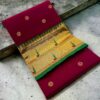
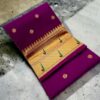
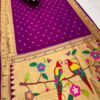
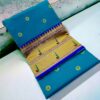
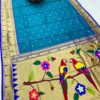
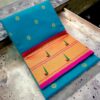
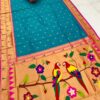
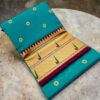
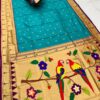


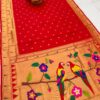
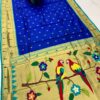
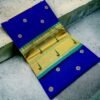
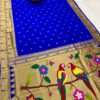
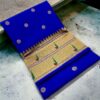
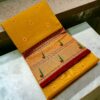
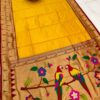
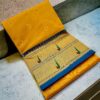
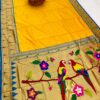
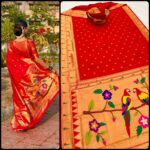
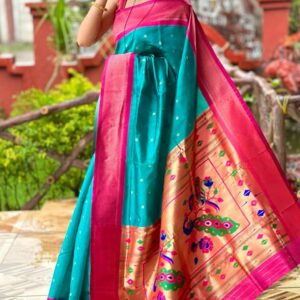
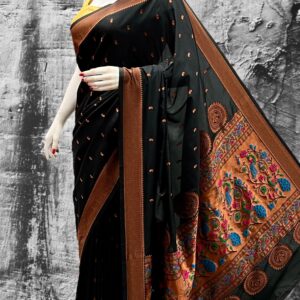
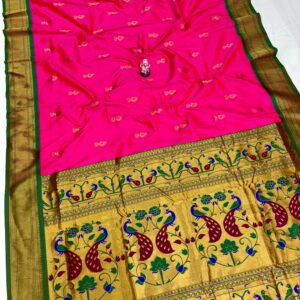
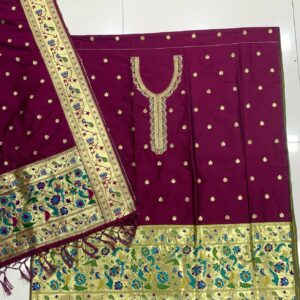
Reviews
There are no reviews yet